Tucker 48
Brands such as Chevrolet, Cadillac or Buick are a staple in the usage when talking about American cars. But one single manufacturer has burned deep into the collective memory of the car fans – even though it failed with its only built model terrific against the establishment and produced only 51 copies. Yes, we are talking about Preston Thomas Tucker, who grew up on a peppermint farm near Detroit and began at the age of 16 with the repair of low-priced cars, which he then resold for a profit. He dropped out of training at Cass Technical High School to work as an ‘office boy’ Cadillac. Later he started working at Michigan Police, but was released when it became apparent that he was still below the minimum age. Then he and his wife leased a gas station, which she operated while he worked at Ford on the assembly line. Finally he had another short episode at Michigan Police. Then he started to sell various car makes.
During this last period he met Harry Miller at the Indy 500, where Miller won several times with his race cars and engines. In 1935 he founded the ‘Miller and Tucker Inc’ together with Preston Tucker. Next to that, two years later, Tucker worked with his own company ‘Ypsilanti Machine and Tool Company’ on a fast infantry fighting vehicle with a Miller-Packard-V12-engine under the name ‘Tucker Tiger’. Ultimately, however, there was no mass production of this vehicle. Subsequently, he tried to finance his fighter aircraft Tucker XP-57 through a specially founded corporation, but failed. He sold that company and went back to Detroit with plans for his own automobile. This own car was presented by him in an article in ‘Science Illustrated’ in late 1946 as Tucker 48. The number should refer to the planned modelyear 1948, while the vehicle itself was characterized mainly by the latest safety technology, which couldn’t be found on any other car of that time in this combination.
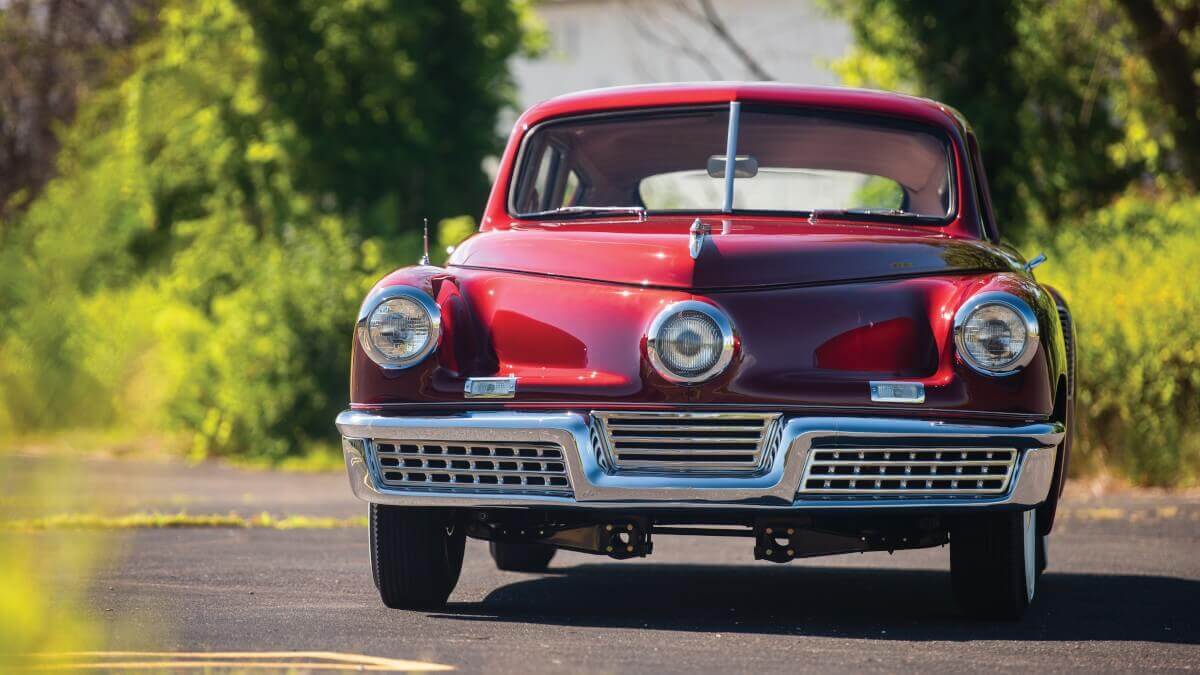



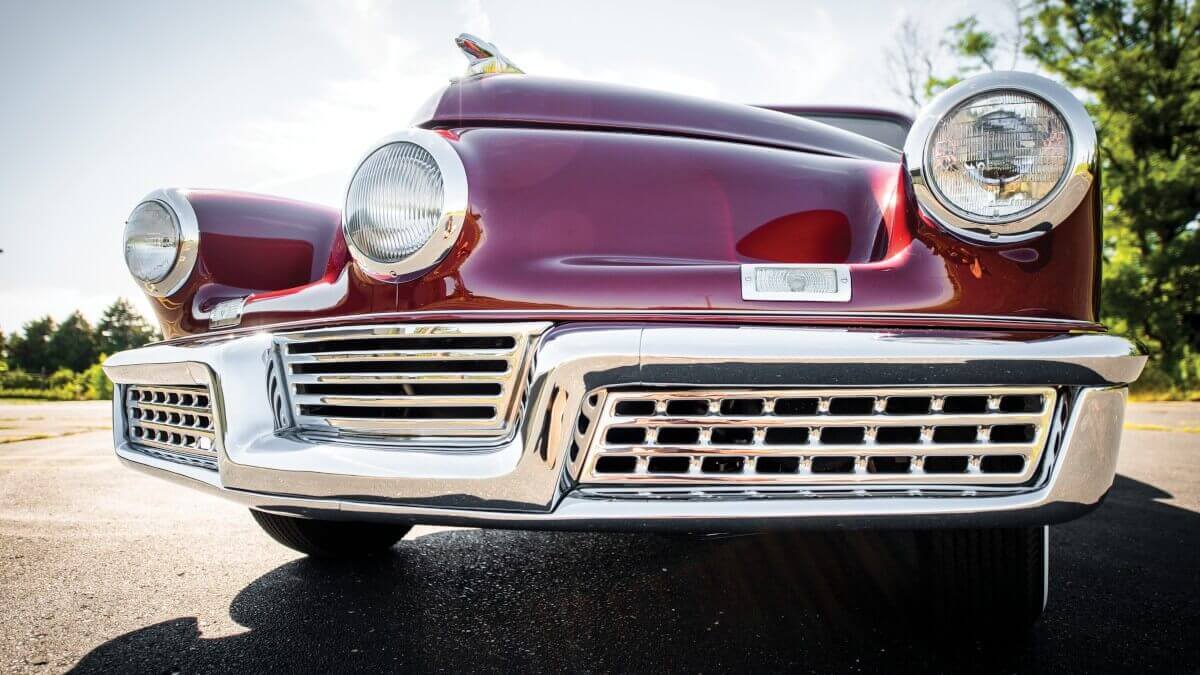



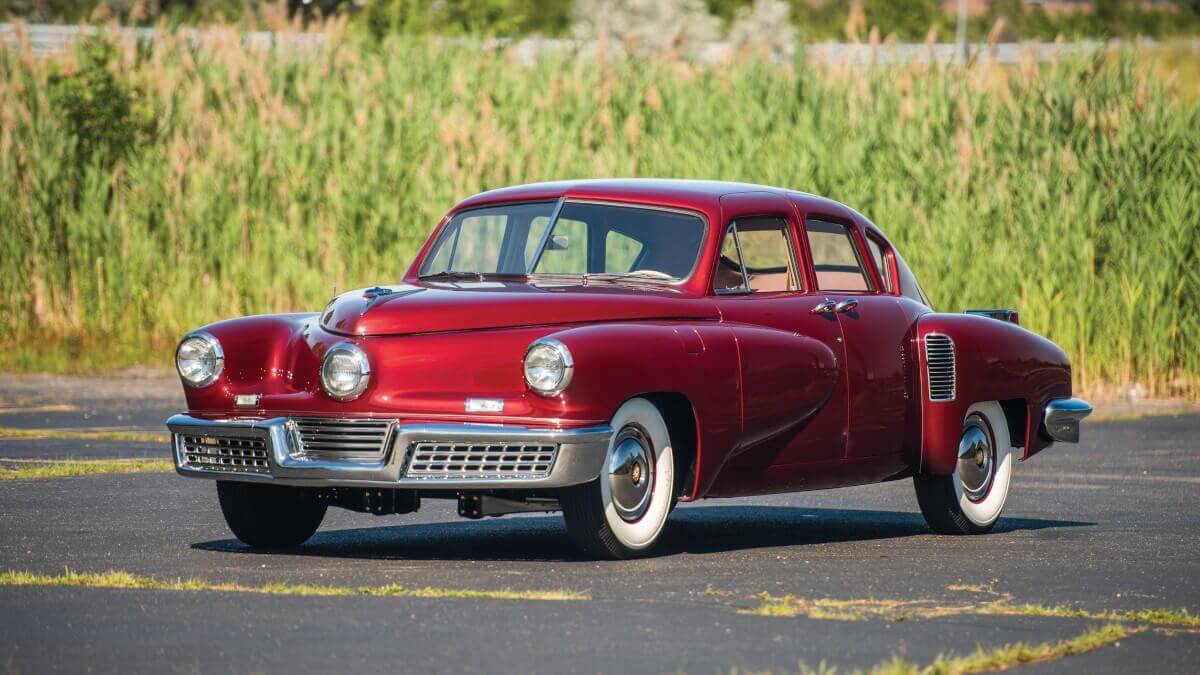



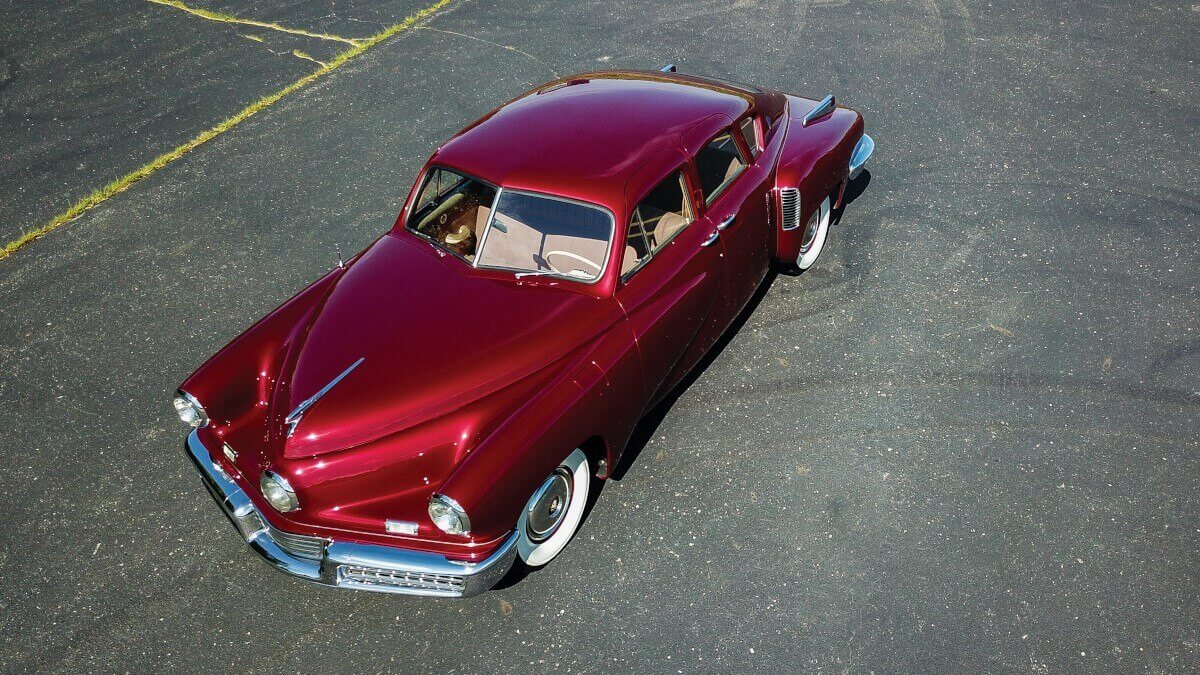



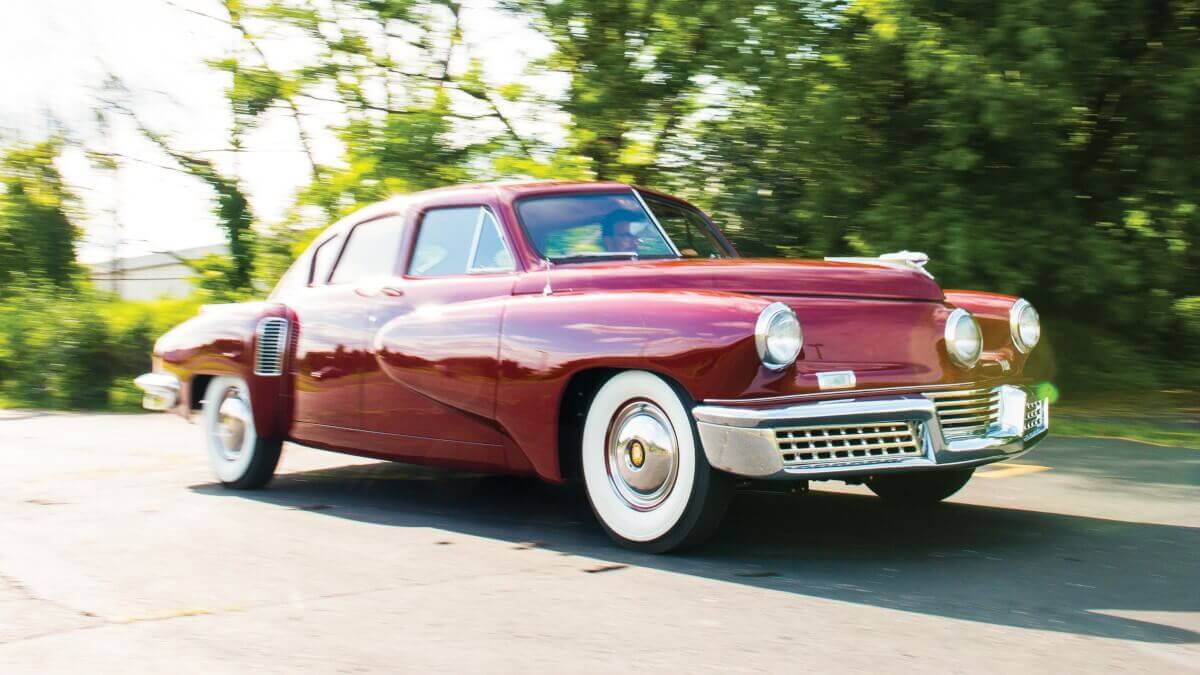



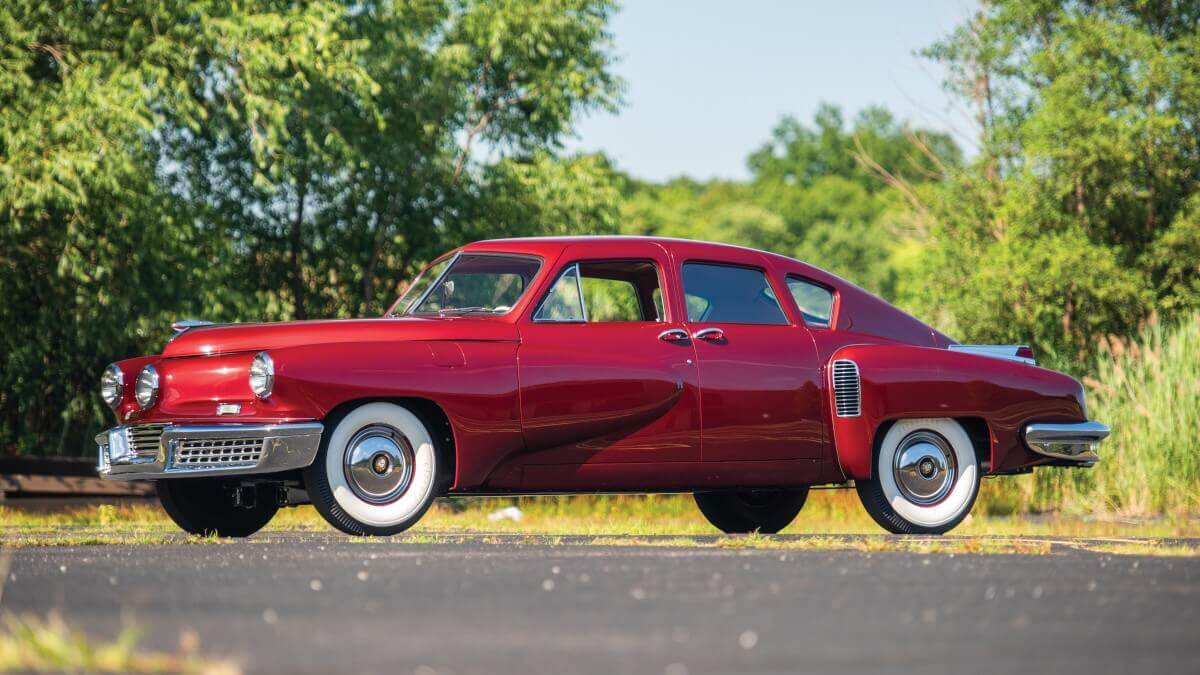



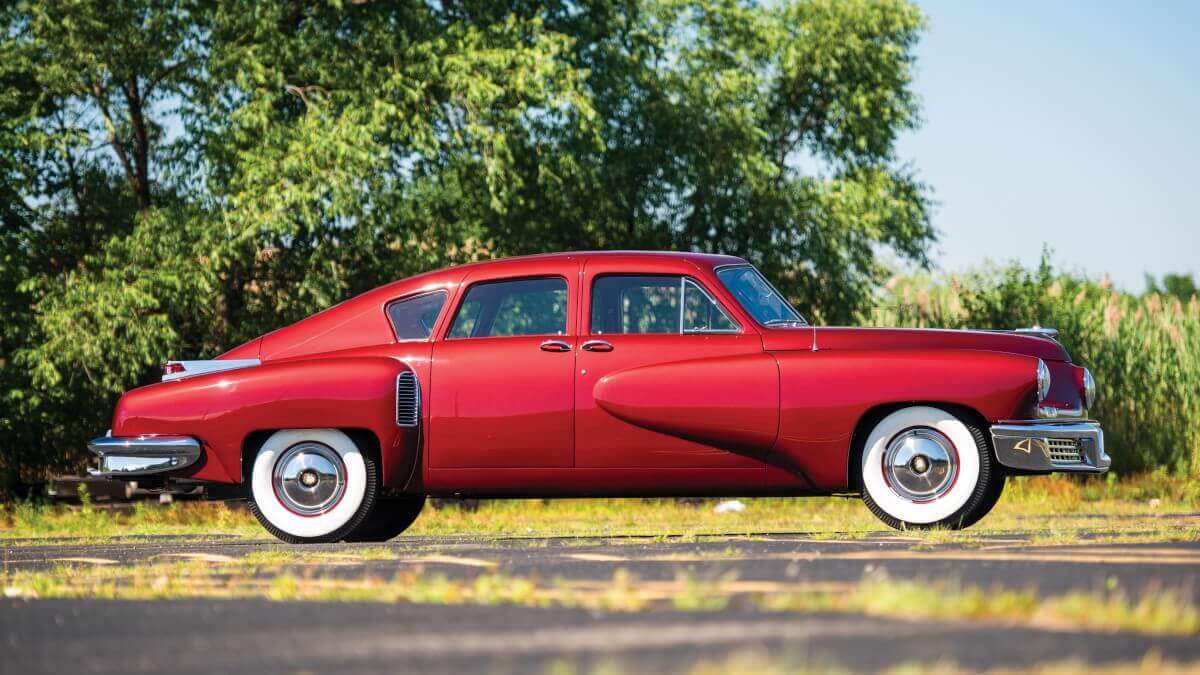



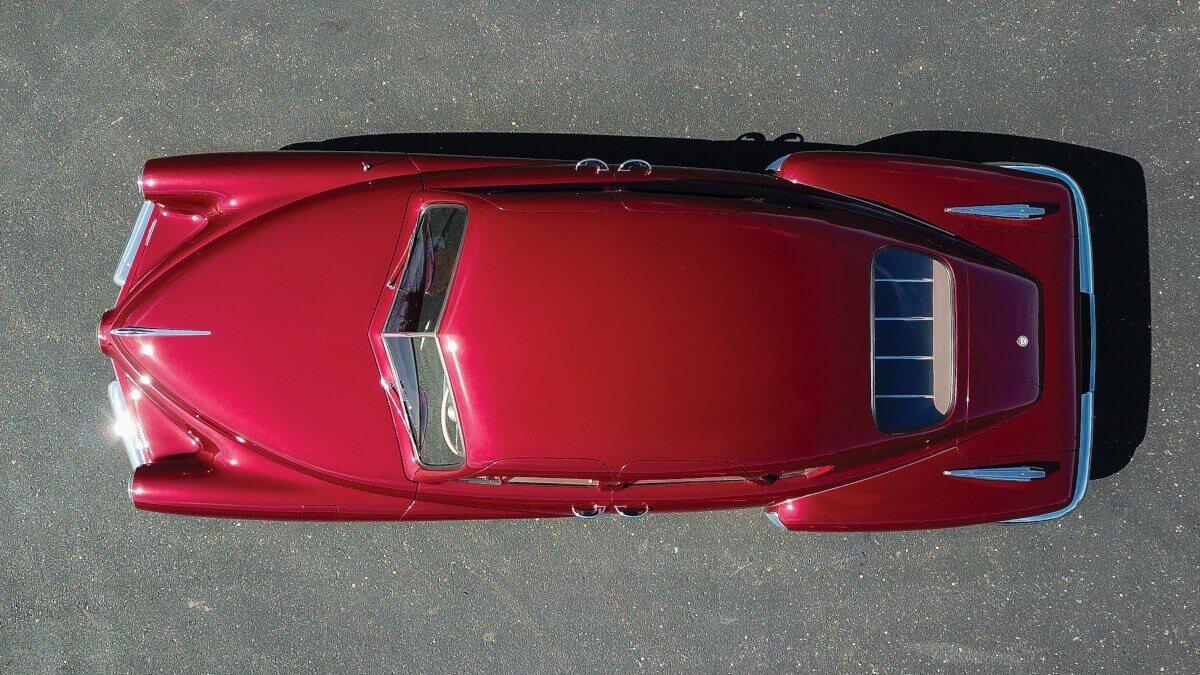



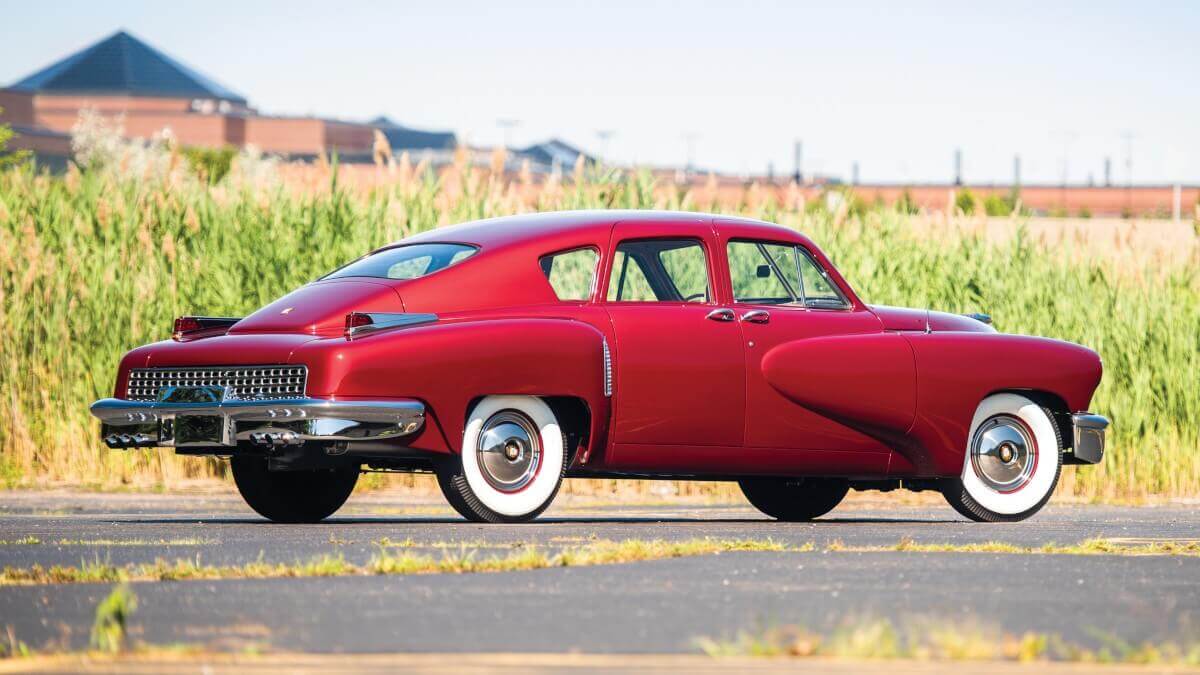



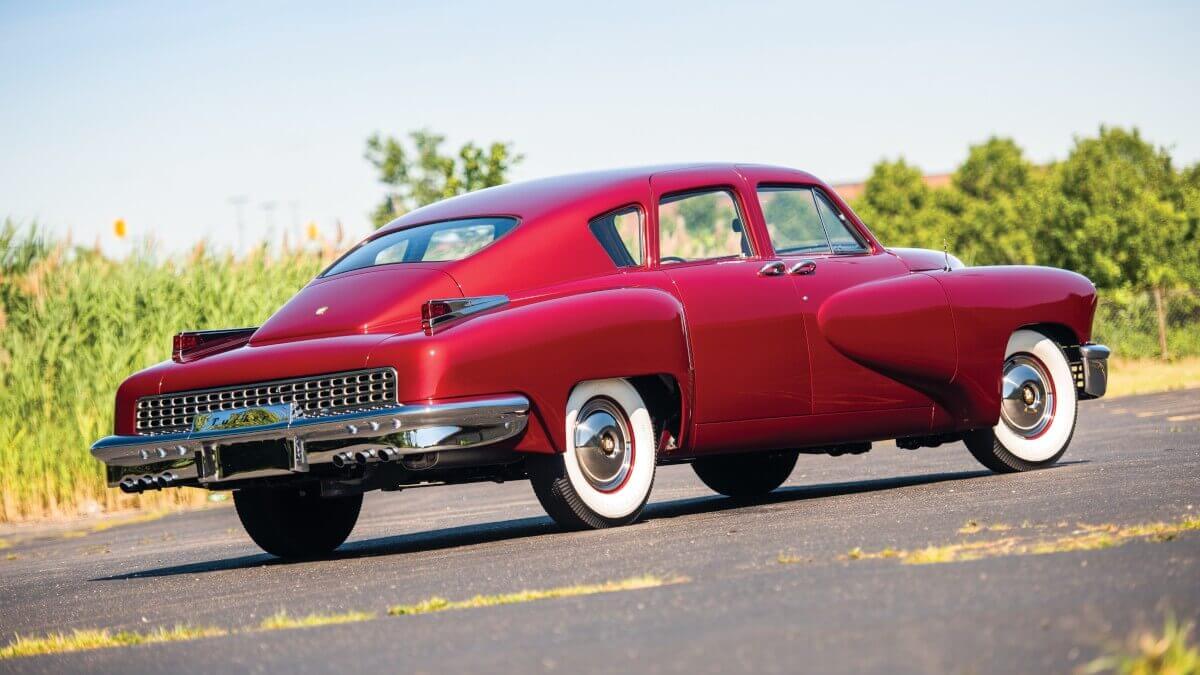



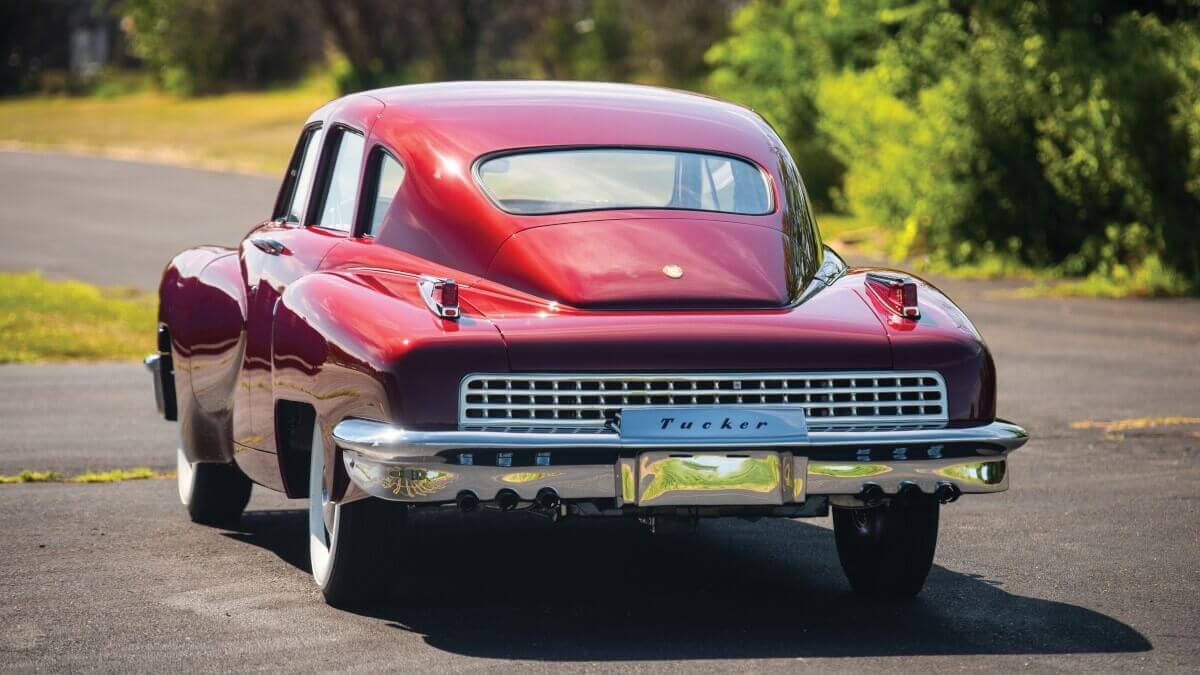



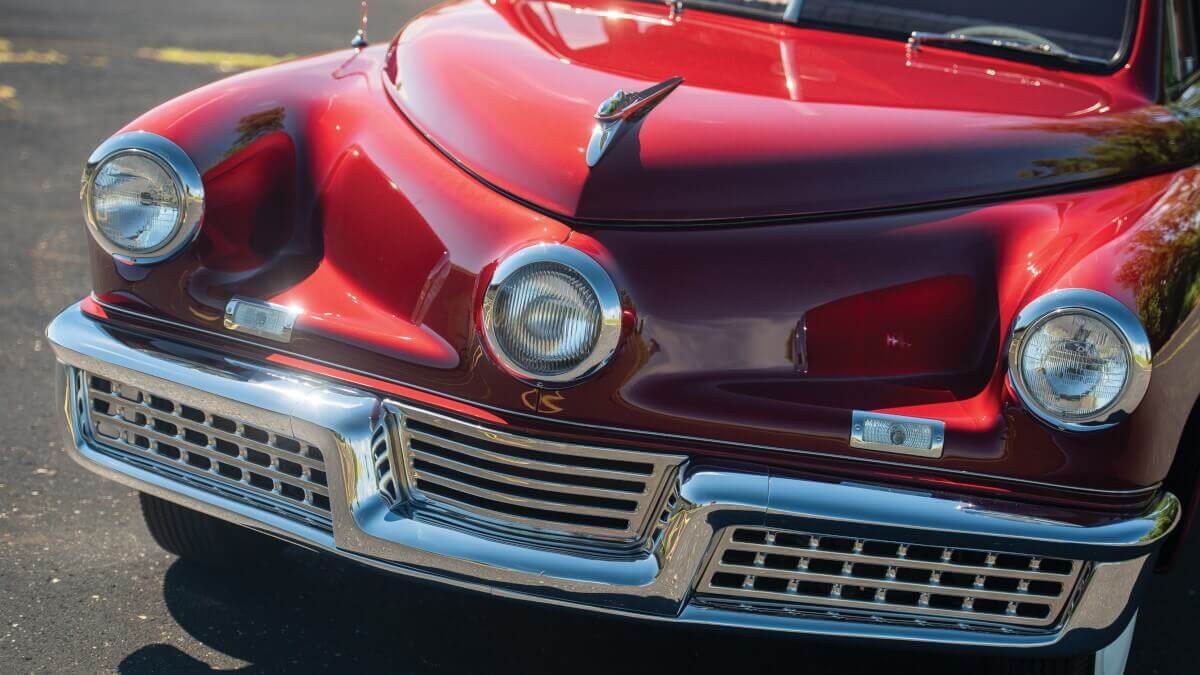



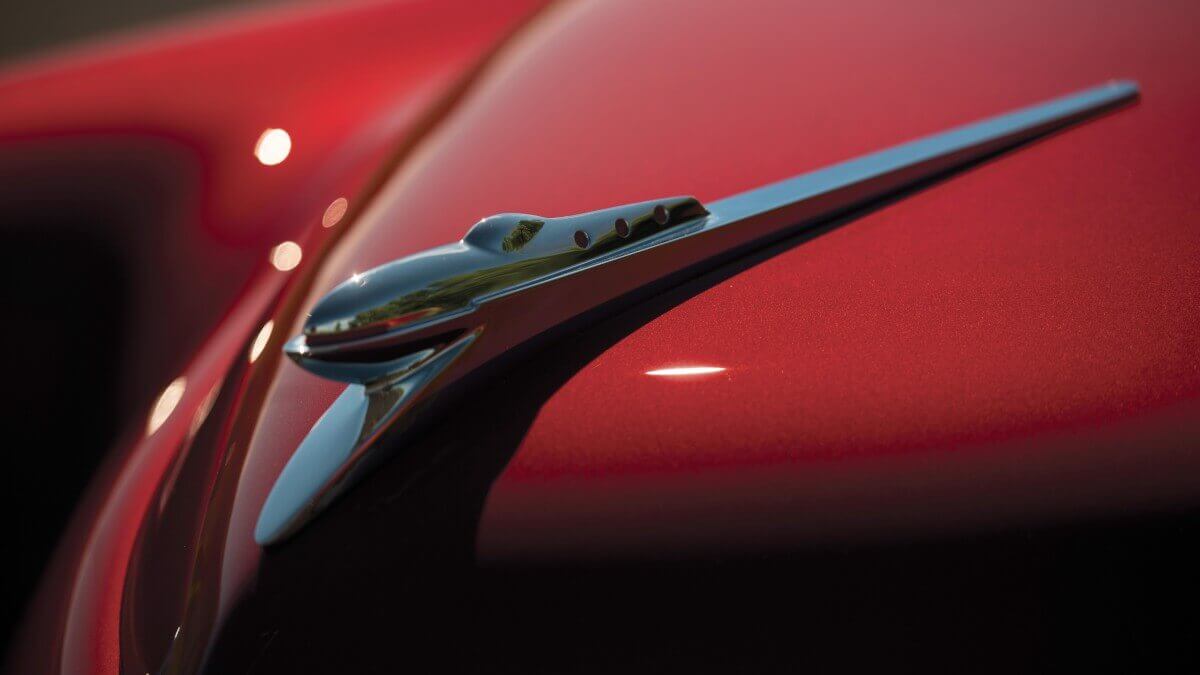



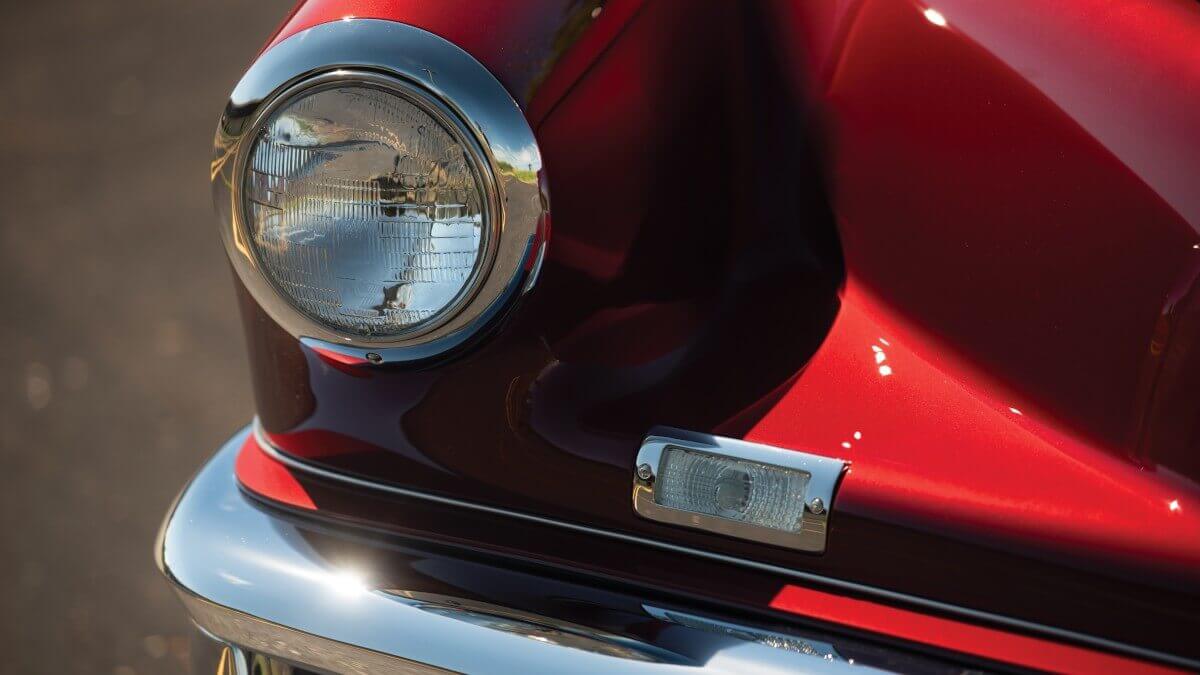



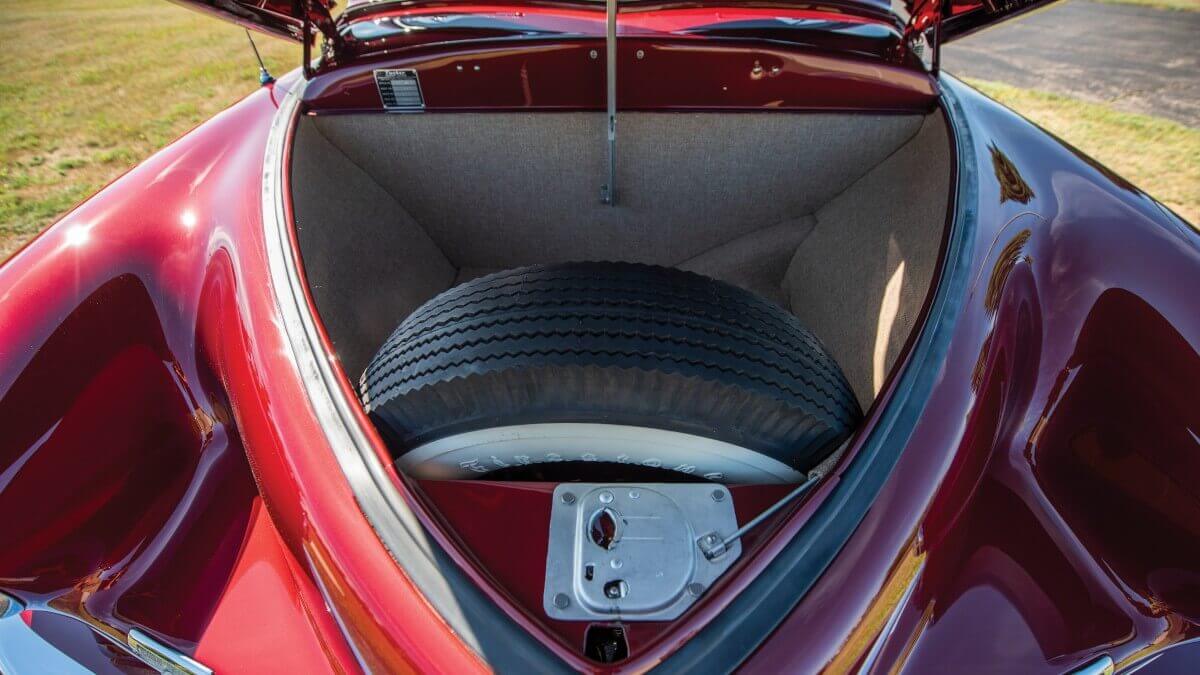



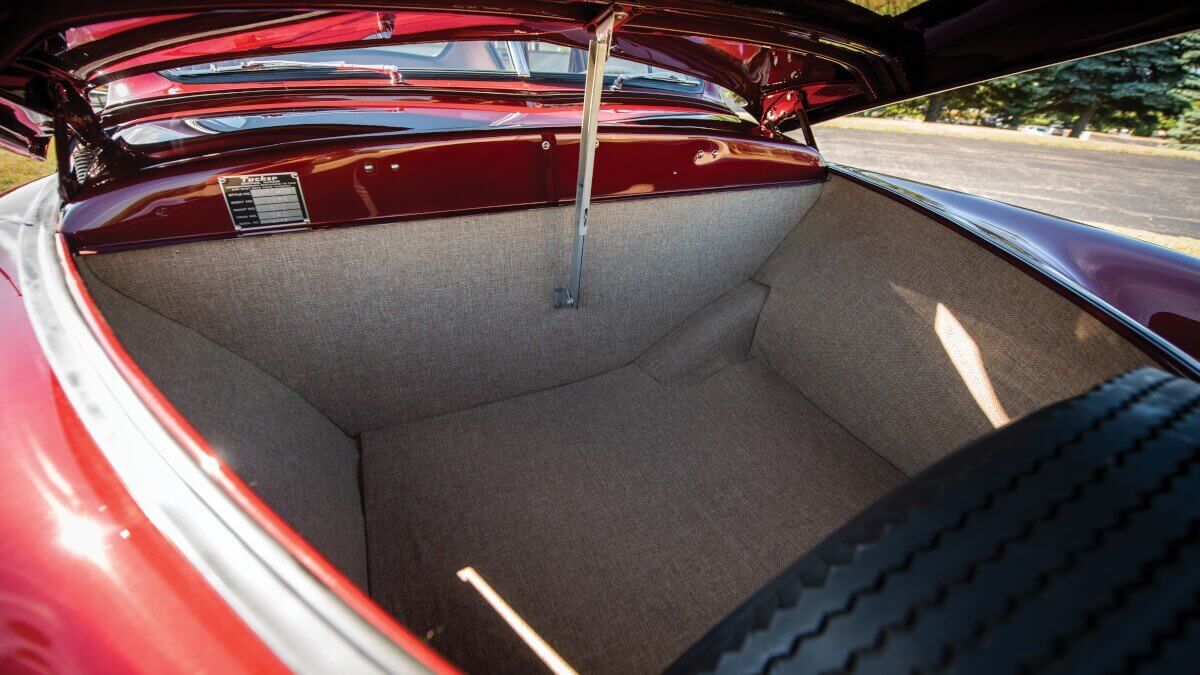



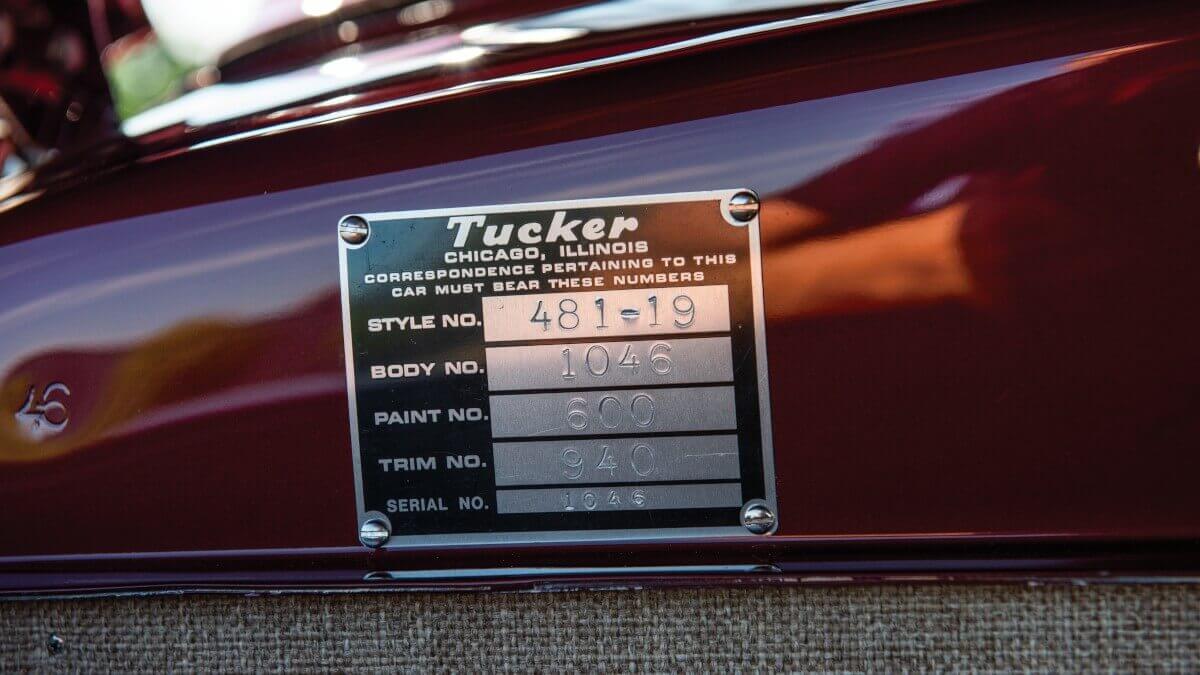



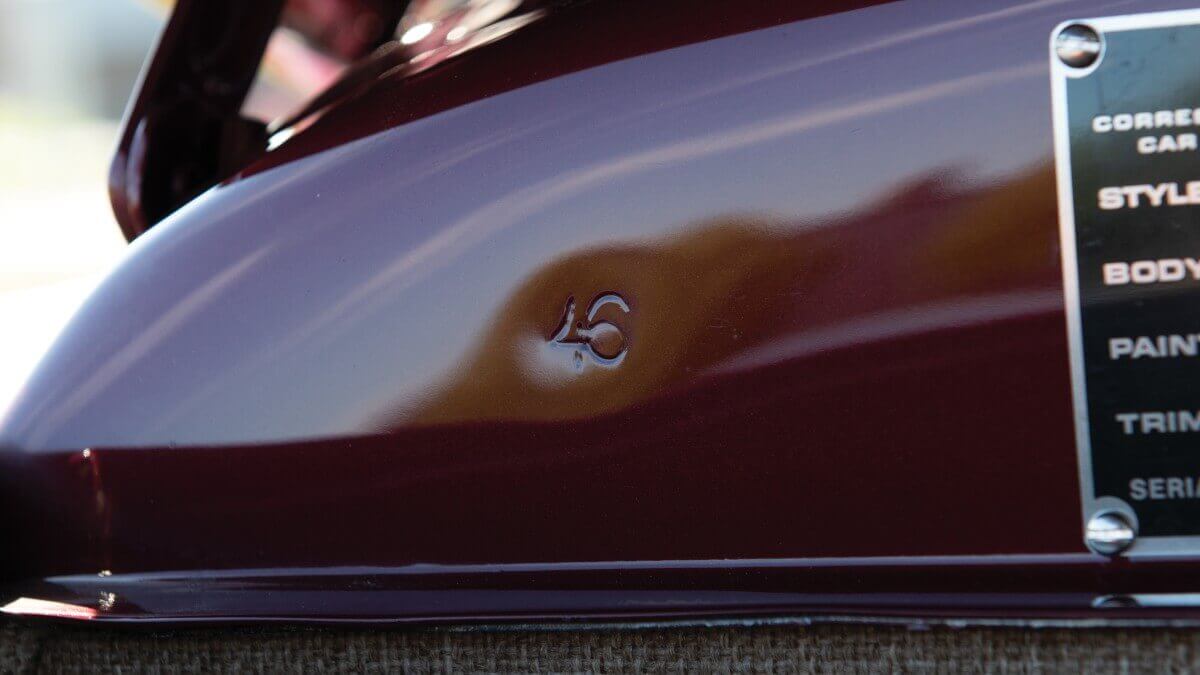



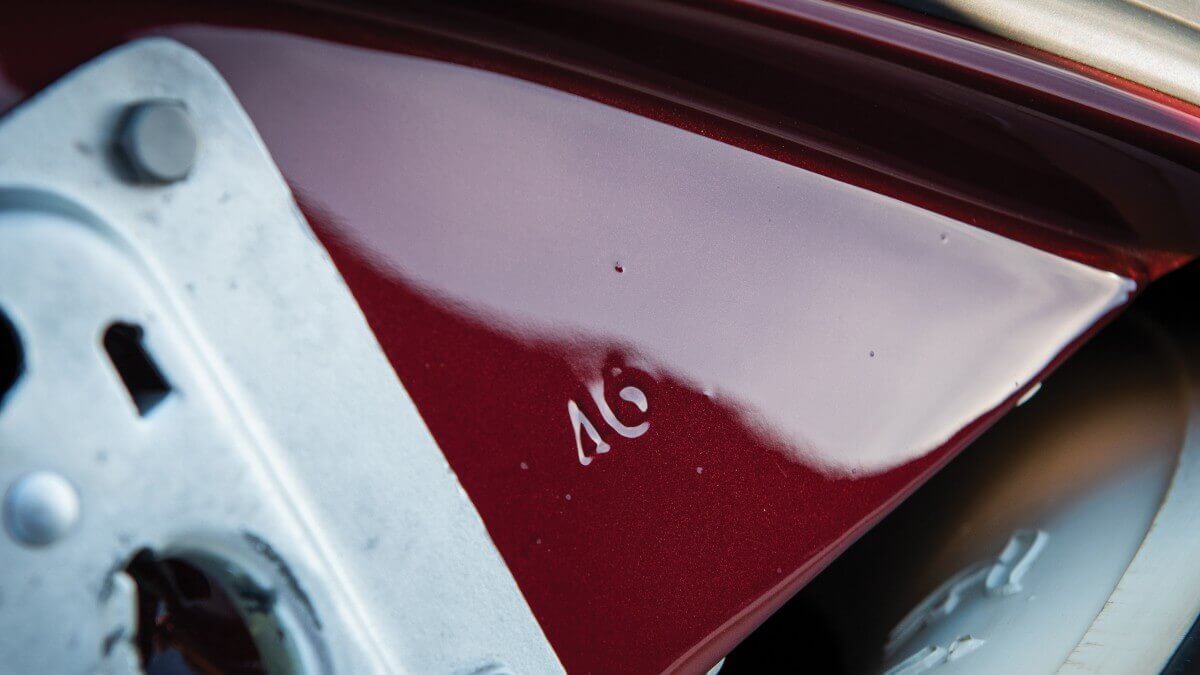



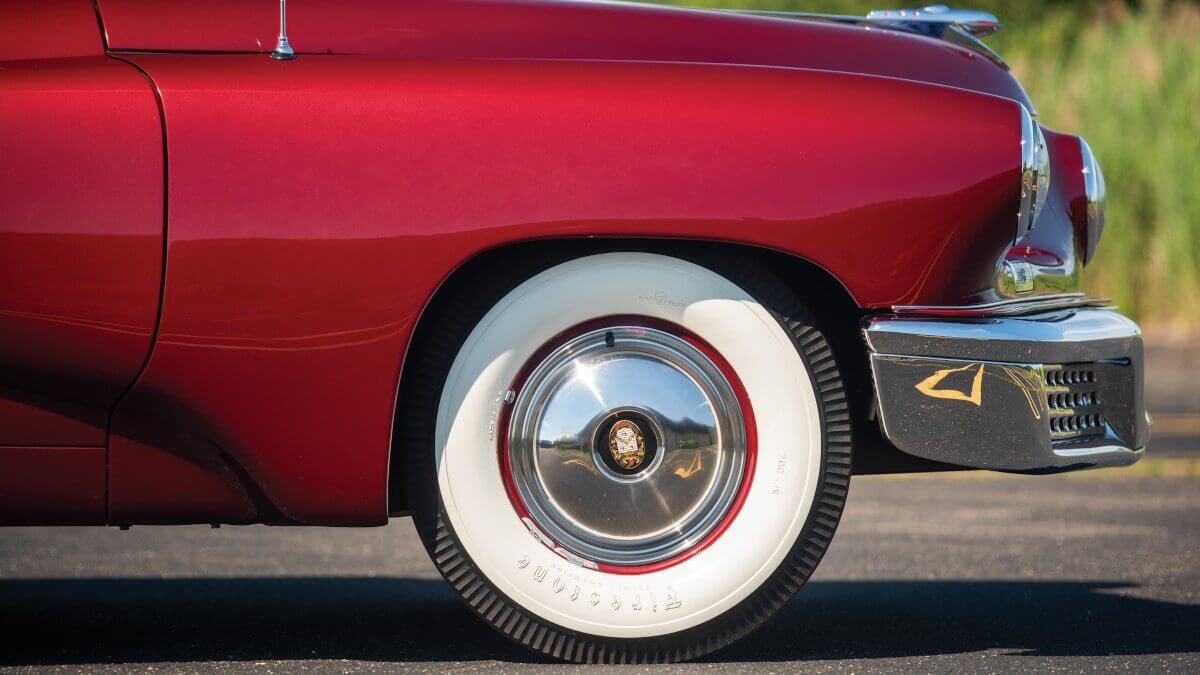



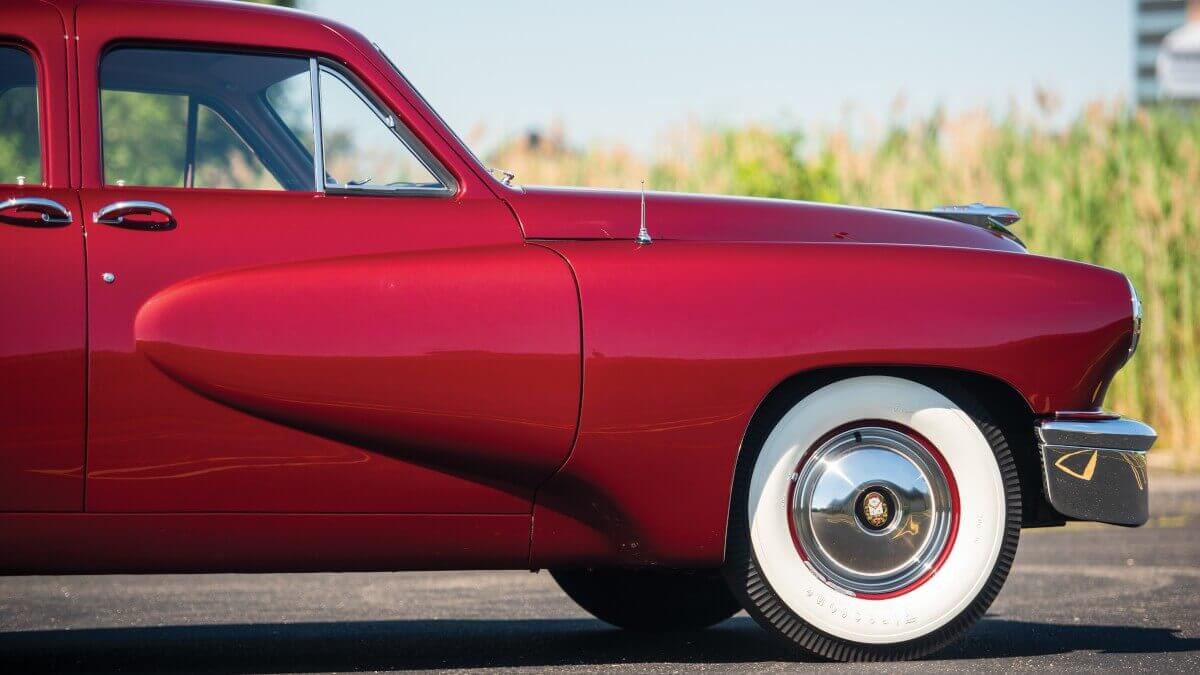



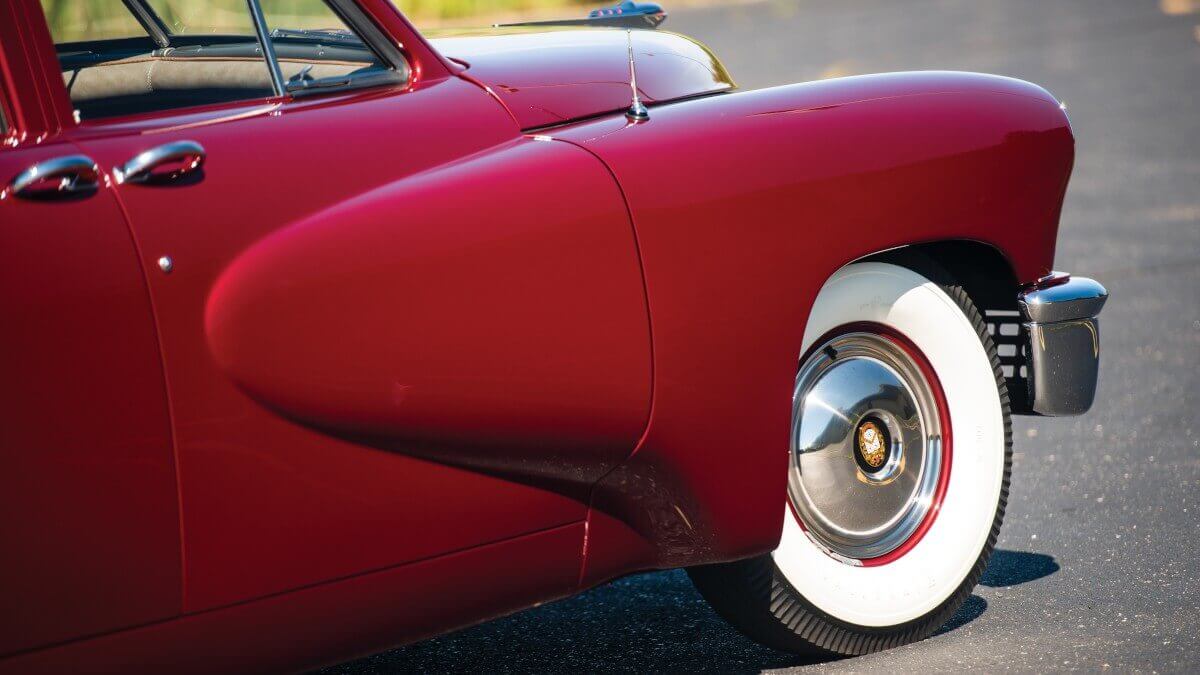



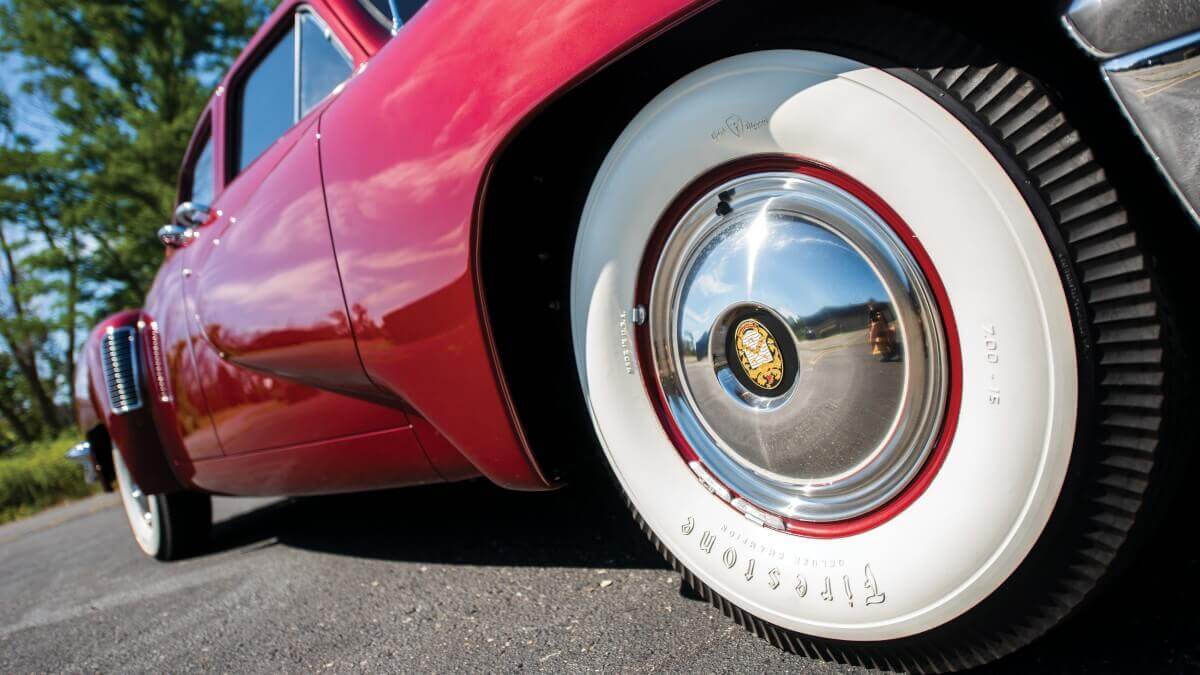



Although Preston Tucker never completed any training or even a degree, he began working on the Tucker 48 on his own and developed the vehicle he dreamed of. While he was mainly responsible for the technical parts, Alex Tremulis drew the body, which was later slightly improved by Ray Dietrich. Actually, an independent, self-developed engine should have been in the car, but its development failed. Instead, Preston Tucker bought a company for aircraft engines, which produced a light-alloy six-cylinder boxer engine with 5.5 liters of displacement and 123 kW/167 PS of power. Tucker mounted the engine in the back to use the front fully as a crumple zone in the event of a crash. In addition, there was a windshield falling outwards in an accident, seat belts, a padded dashboard, disc brakes and a third headlight on the front, which was thought to be a cornering light.
With its smooth shapes and unusual design with a Cd value of only 0.27, the Tucker 48 quickly earned the nickname ‘Torpedo’, which was also used in various advertising materials. As a vehicle name, however, it found as little use as ‘Tin Goose’, as Preston called his first prototype. Of the 5.56 meters long, two meters wide and 1.52 meters high car ultimately only 51 copies including the prototype emerged because the business practices of Preston Tucker made the authorities suspicious and they therefore warned him as a precaution for tax evasion. Maybe some of the ‘big Three’ from Detroit had their hands in this game as well. Ultimately, the allegations could not be maintained, but the reputation of the Tucker brand was permanently destroyed.
So the Tucker Corporation was settled in 1950 and Preston Tucker moved to Brazil, where he tinkered again on an innovative car. However, his health deteriorated increasingly. He returned to the US, was diagnosed with lung cancer and finally died of pneumonia in 1956. 47 of his 51 manufactured Tucker 48 are still known today. In the 1980s a 52nd car was built from original spare parts, which can be seen together with many of the other preserved cars in the movie ‘Tucker – A Man and his Dream’ by Francis Ford Coppola, which debuted exactly 30 years ago. Today some Tucker cars are shown in famous car museums such as the Petersen Automotive Museum, the Nethercutt Museum, the National Automobile Museum and even the Henry Ford Museum.
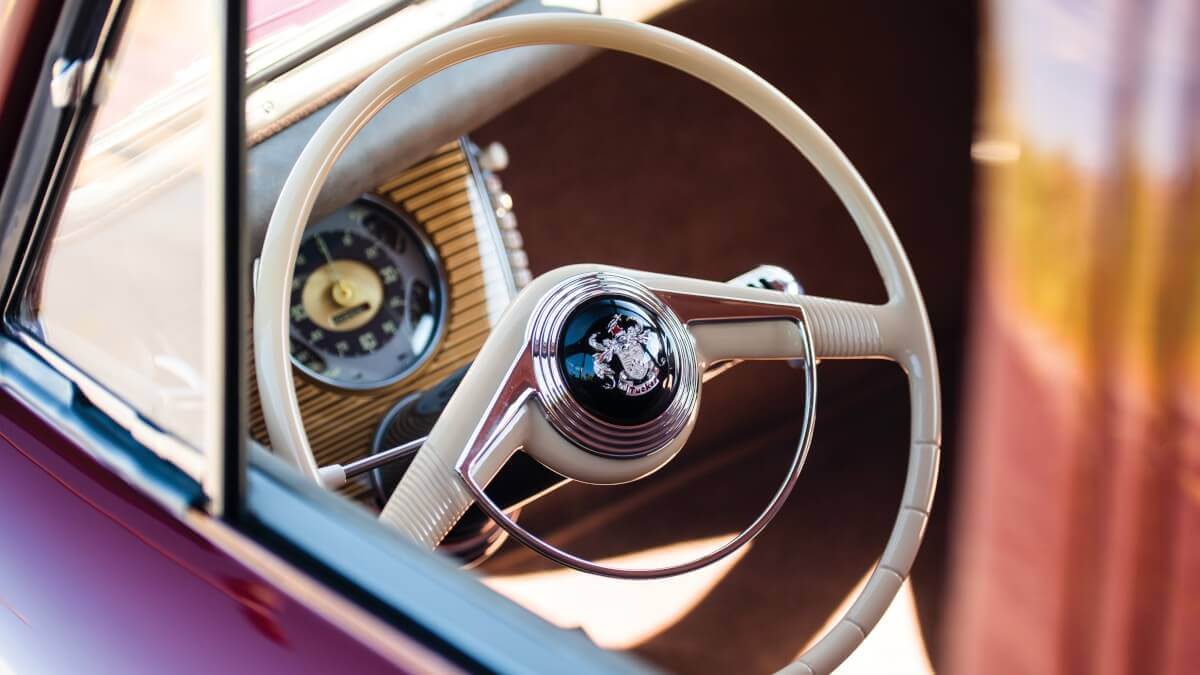



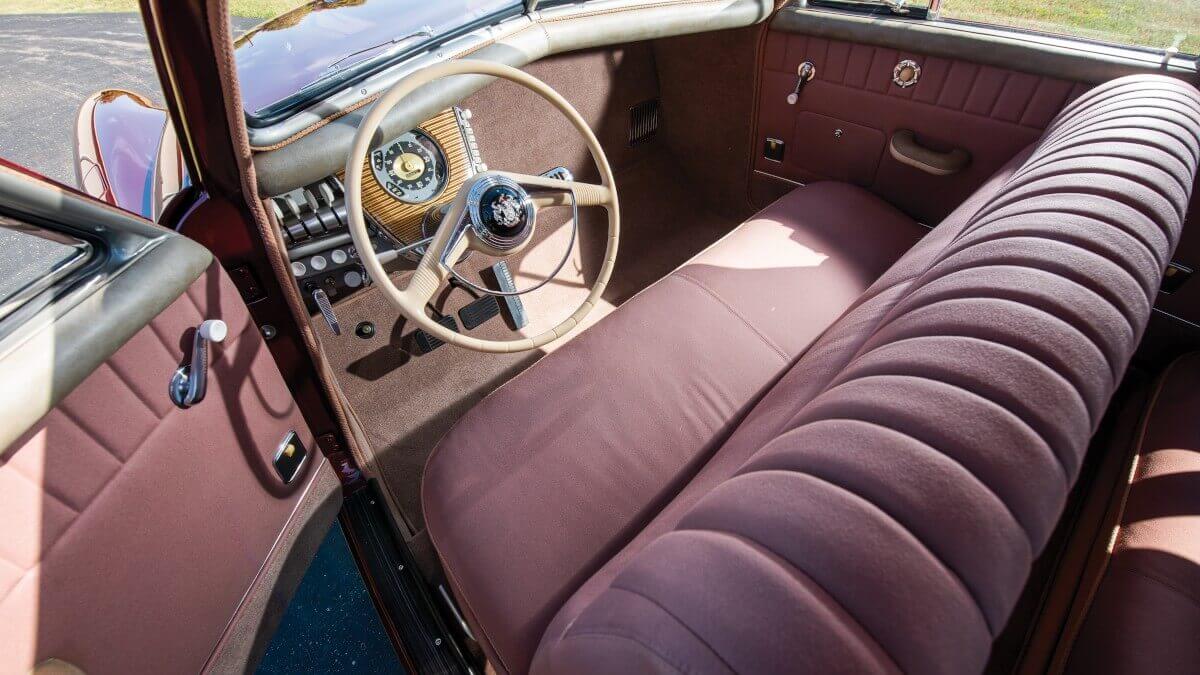



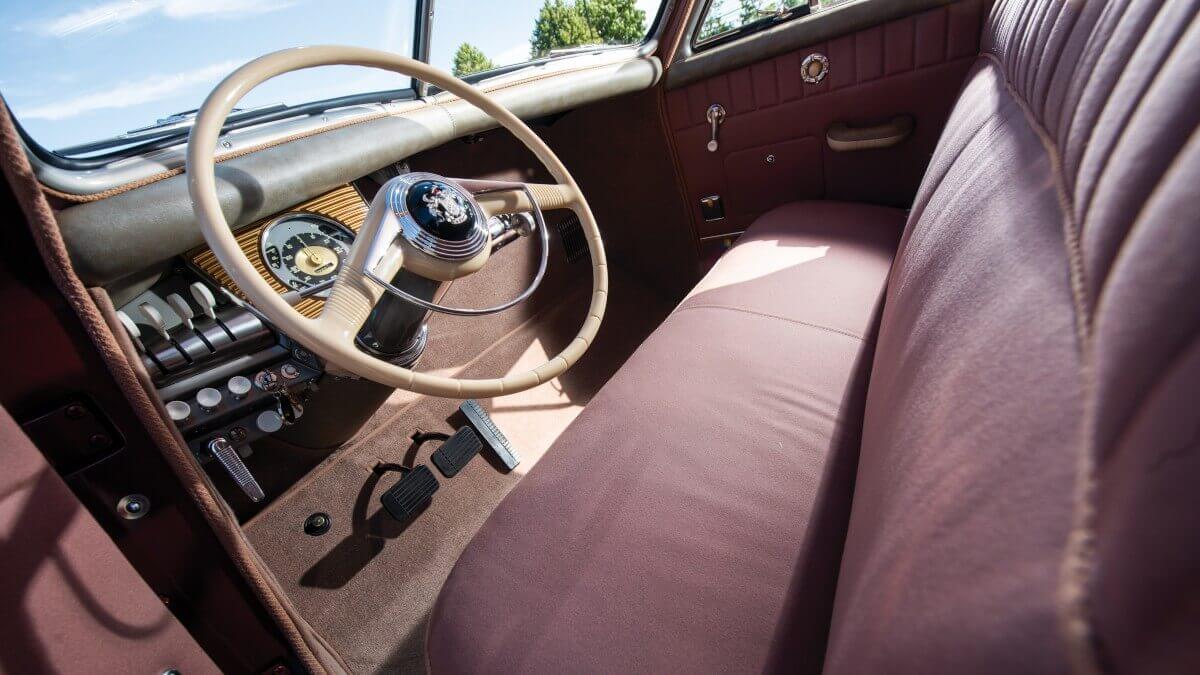



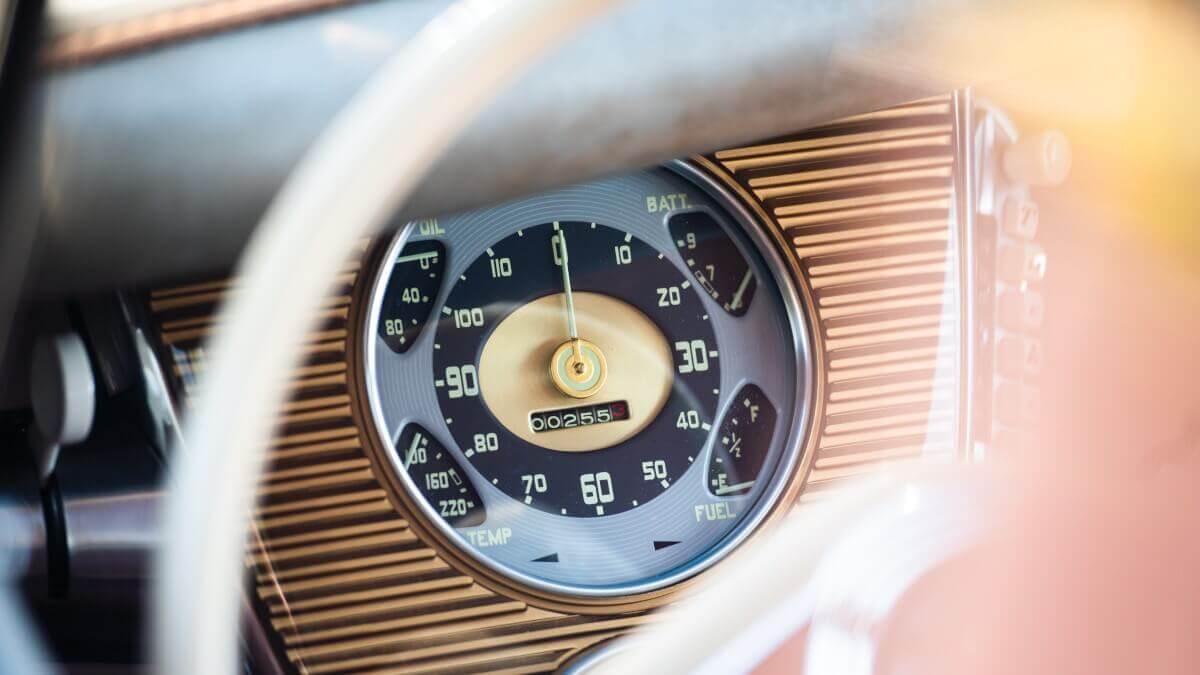



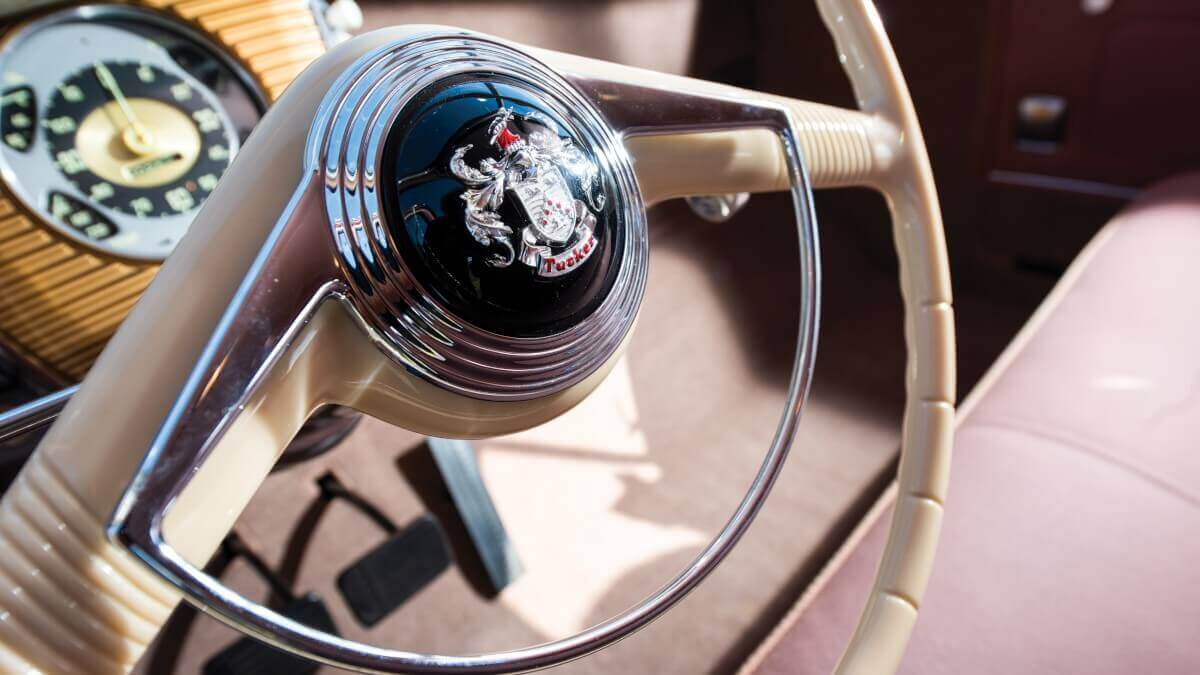



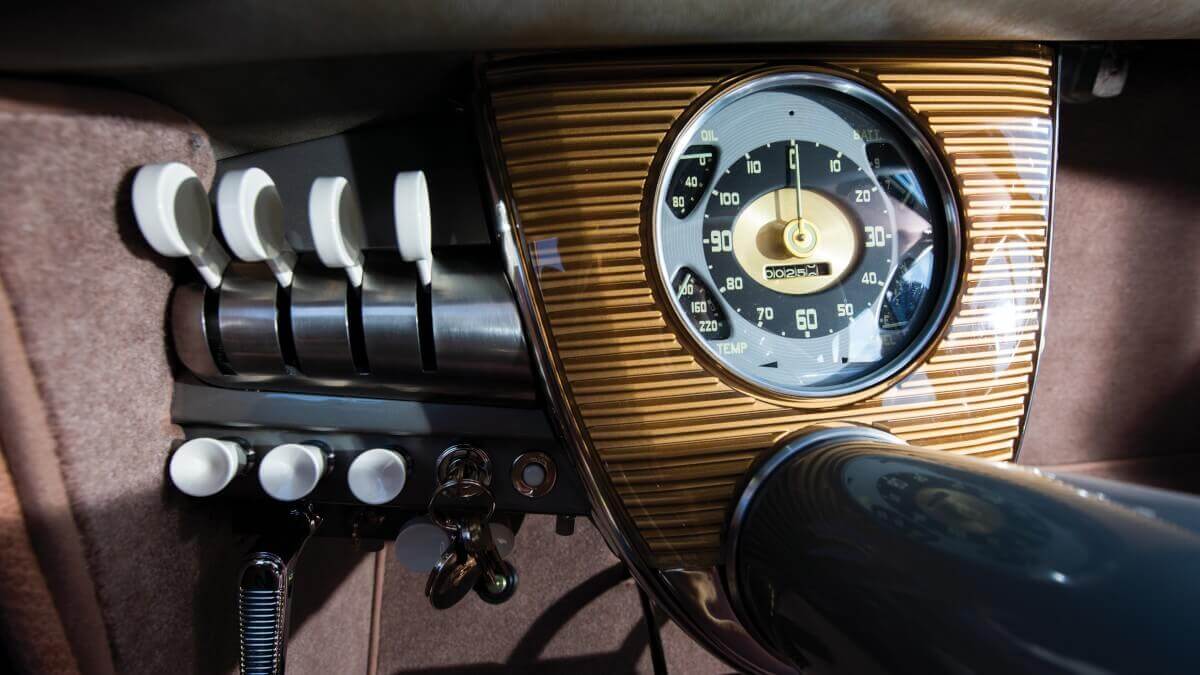



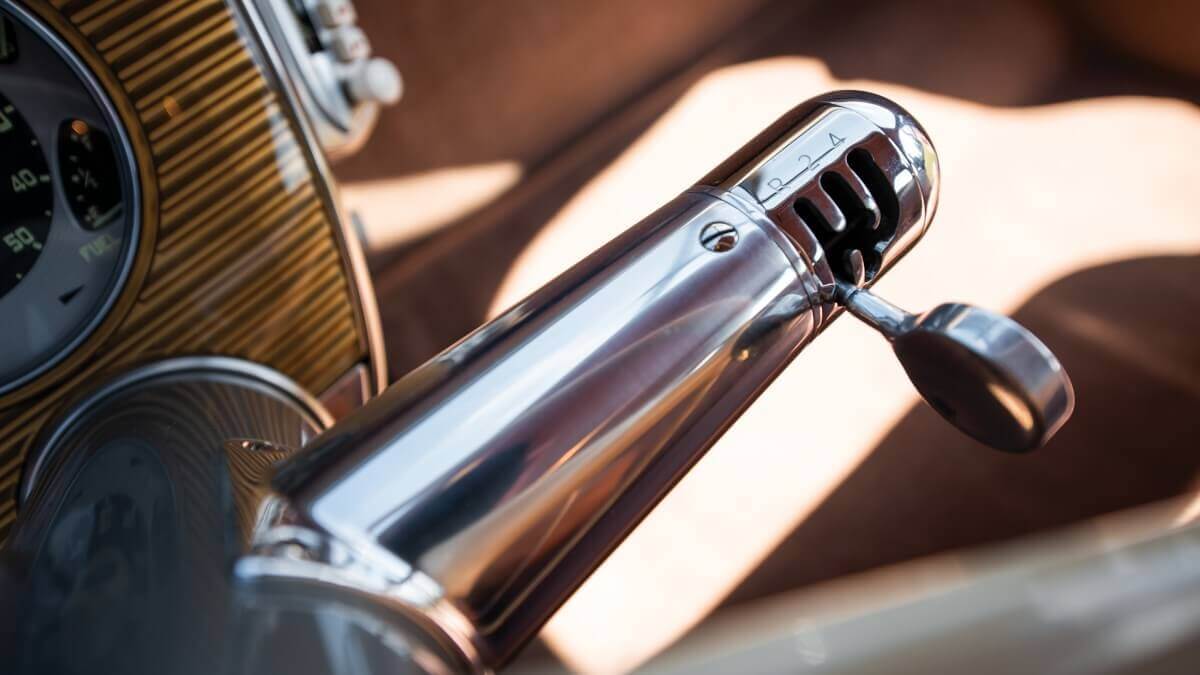



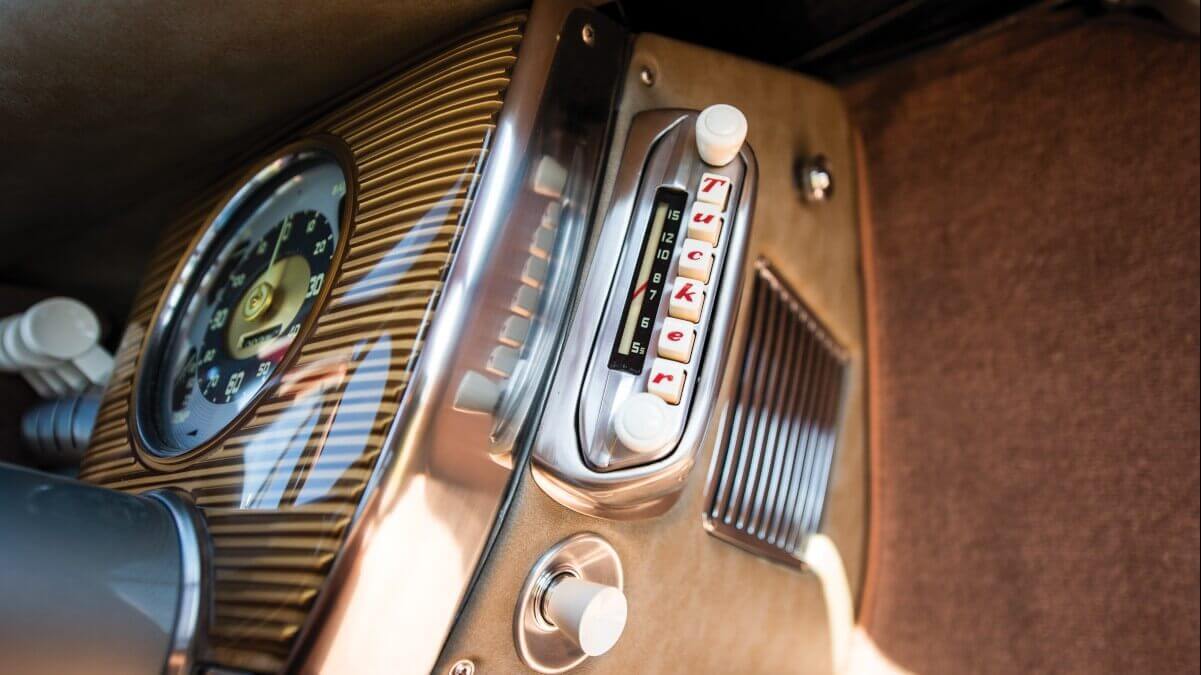



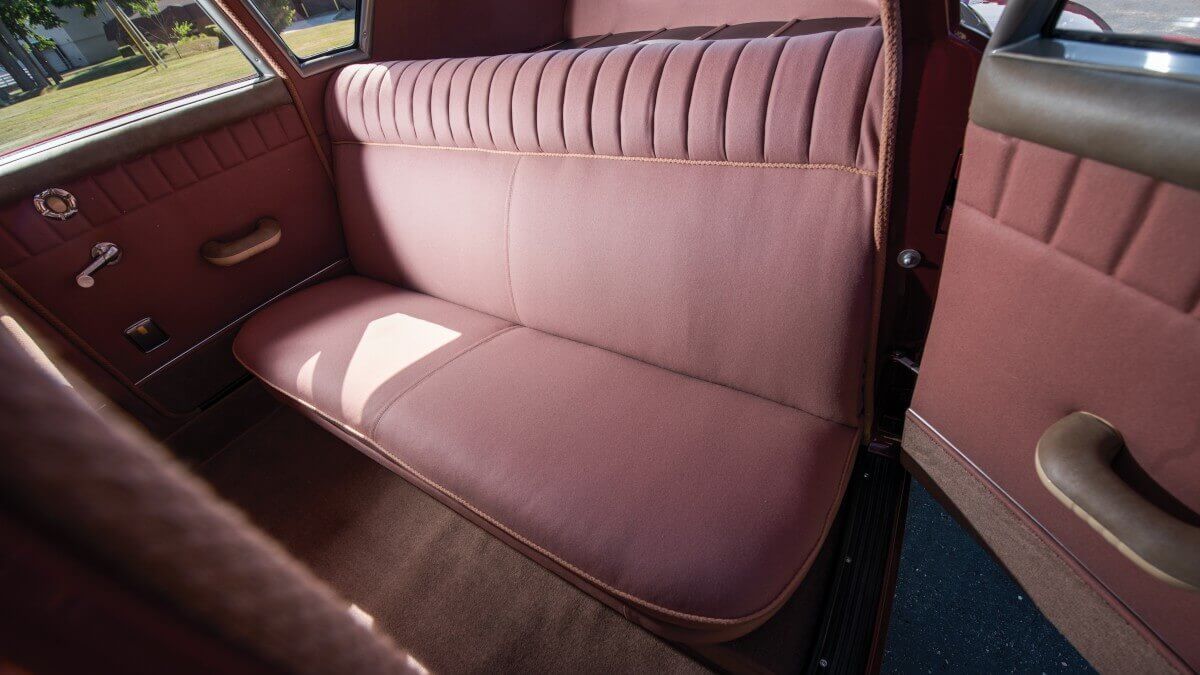



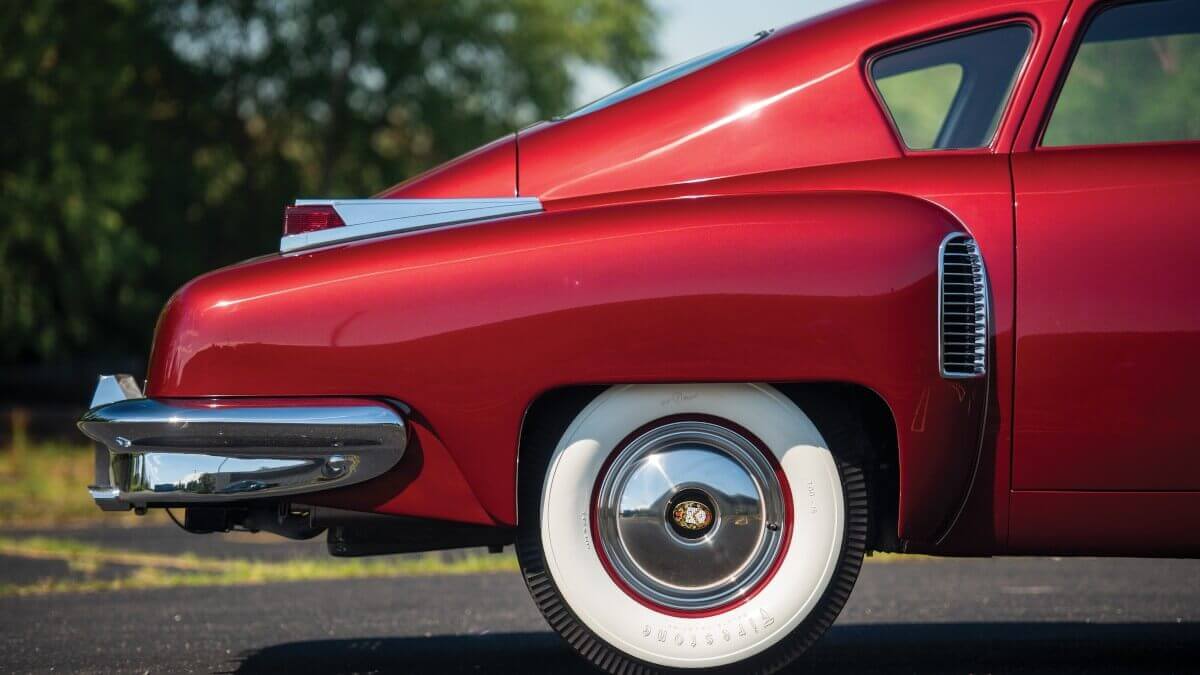



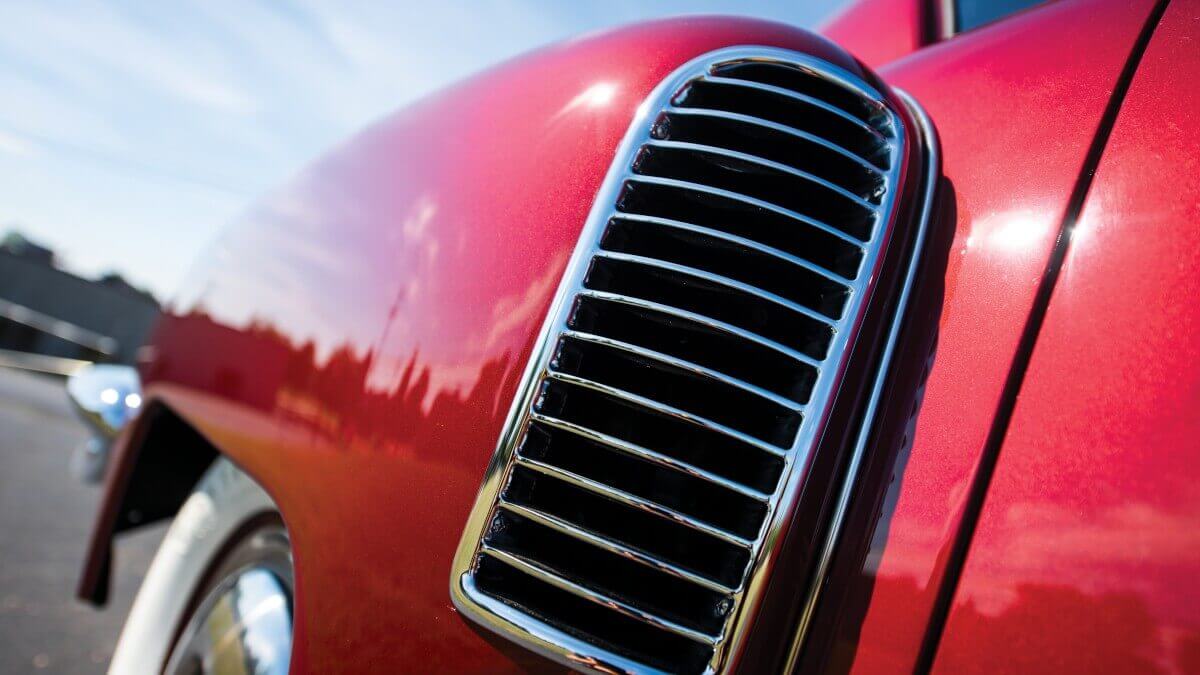



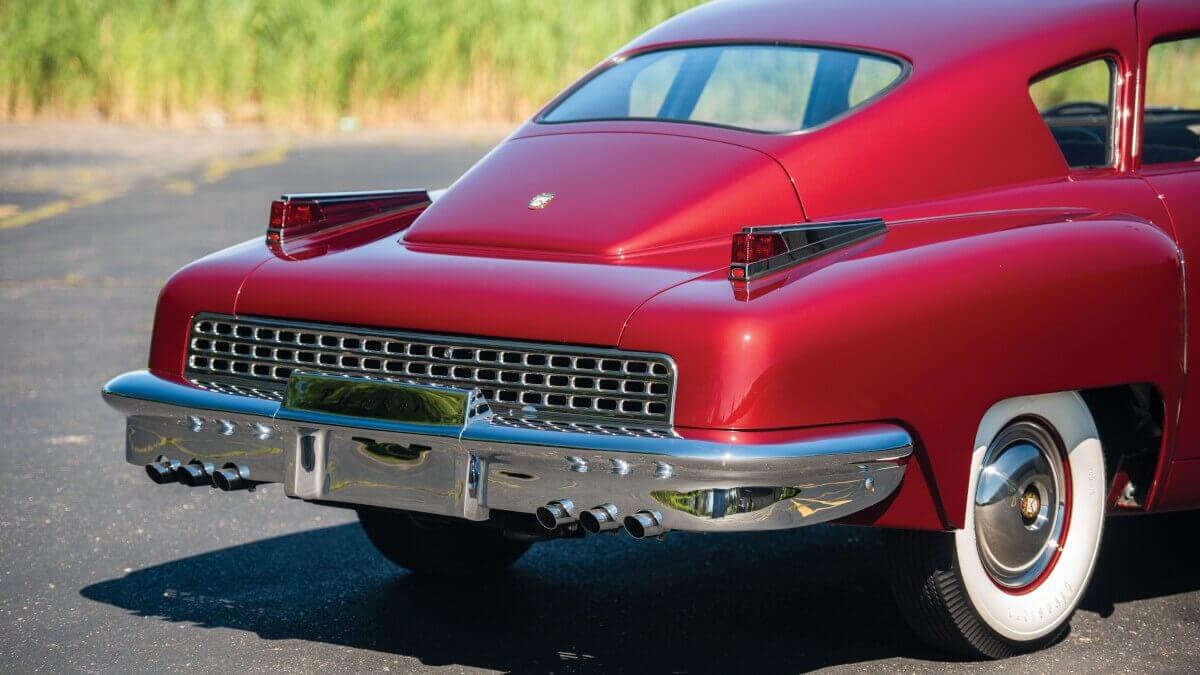



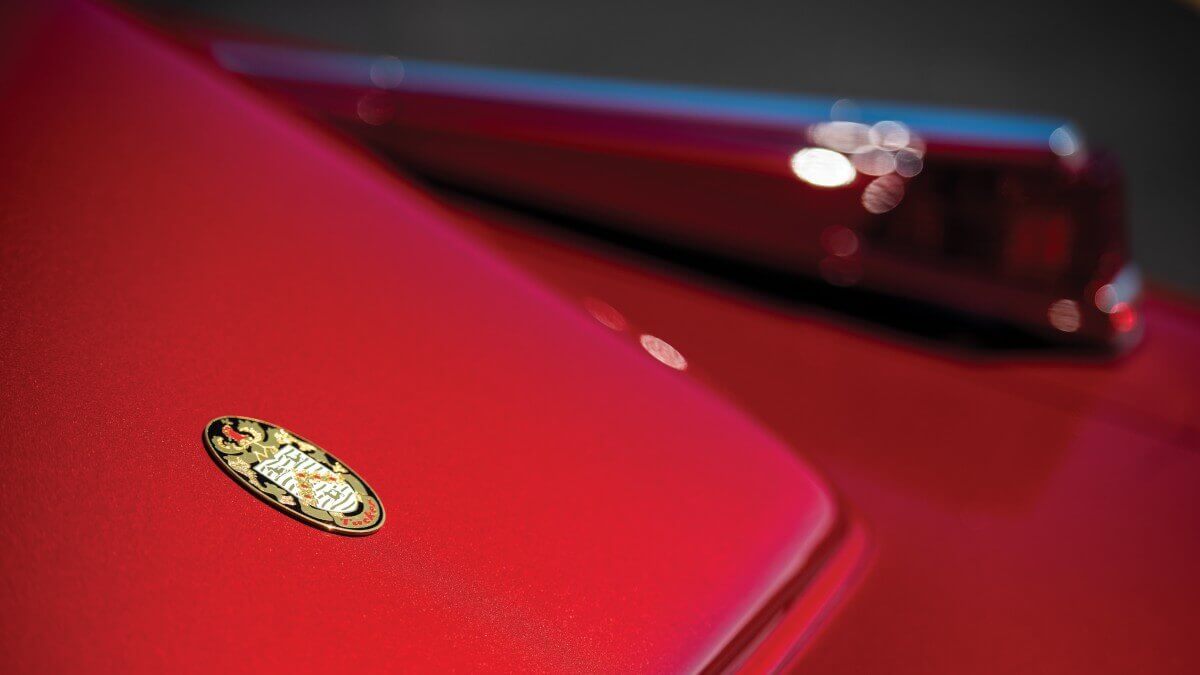



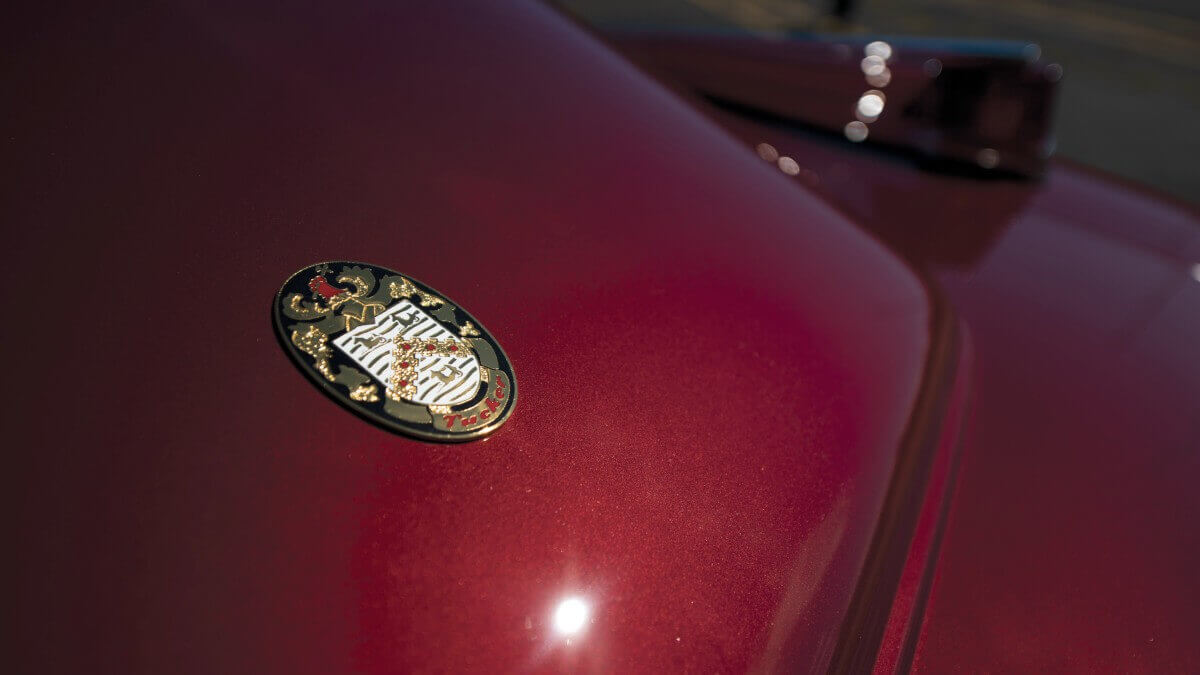



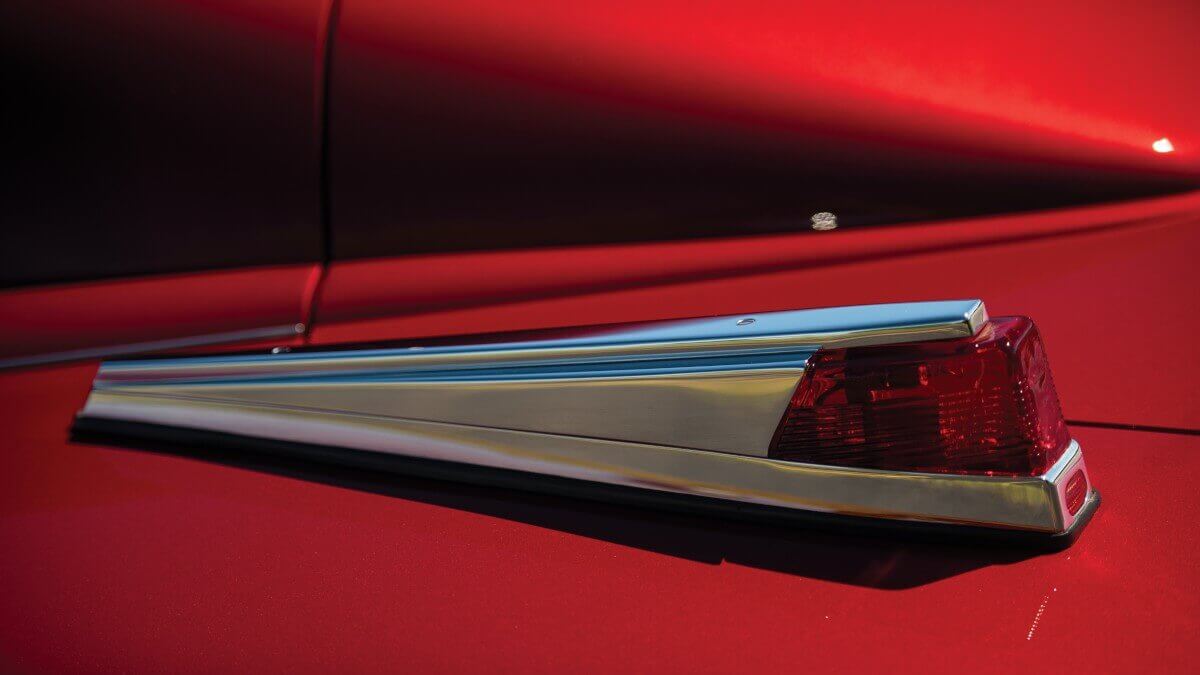



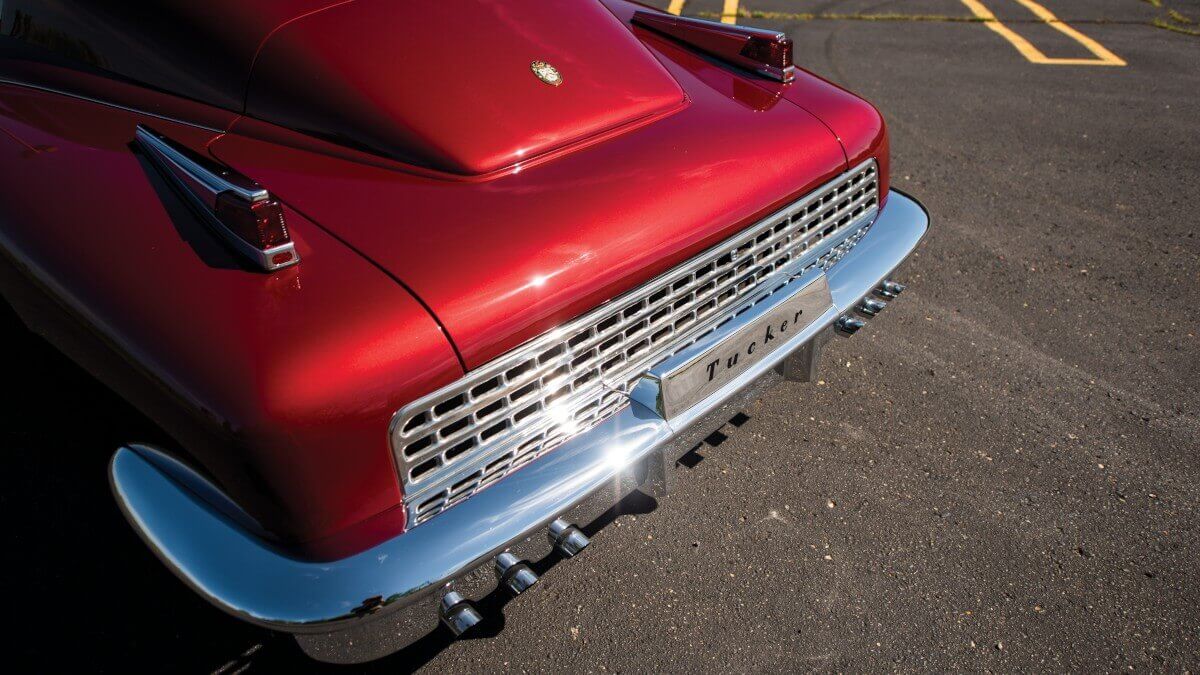



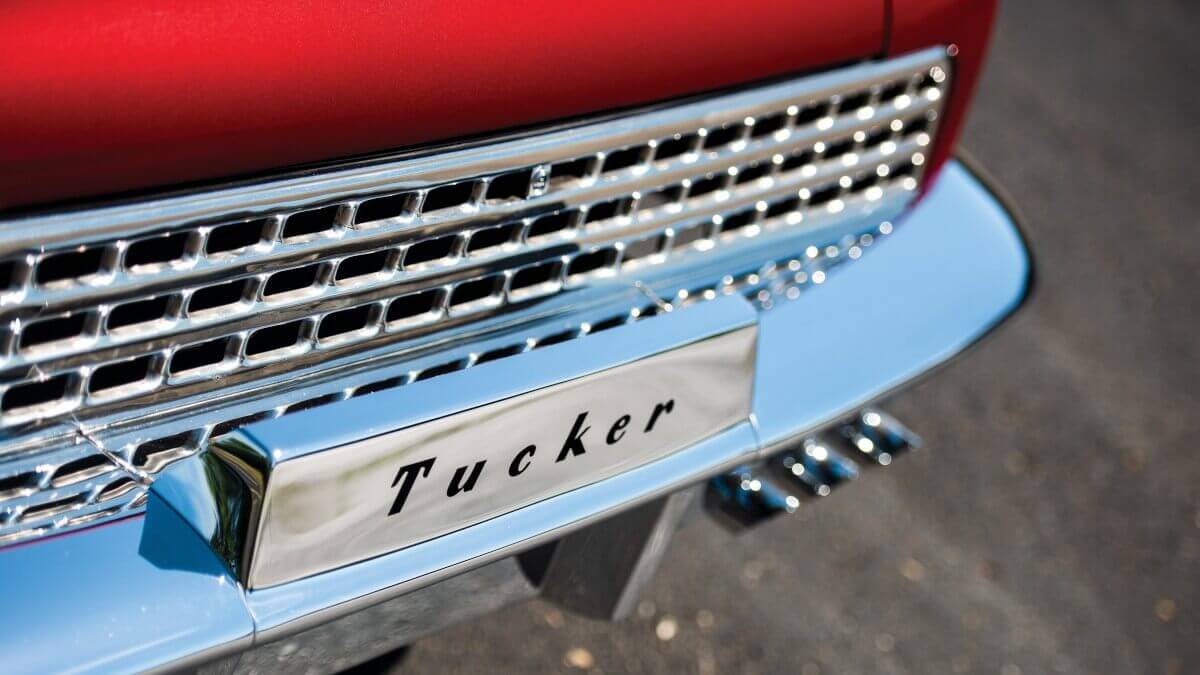



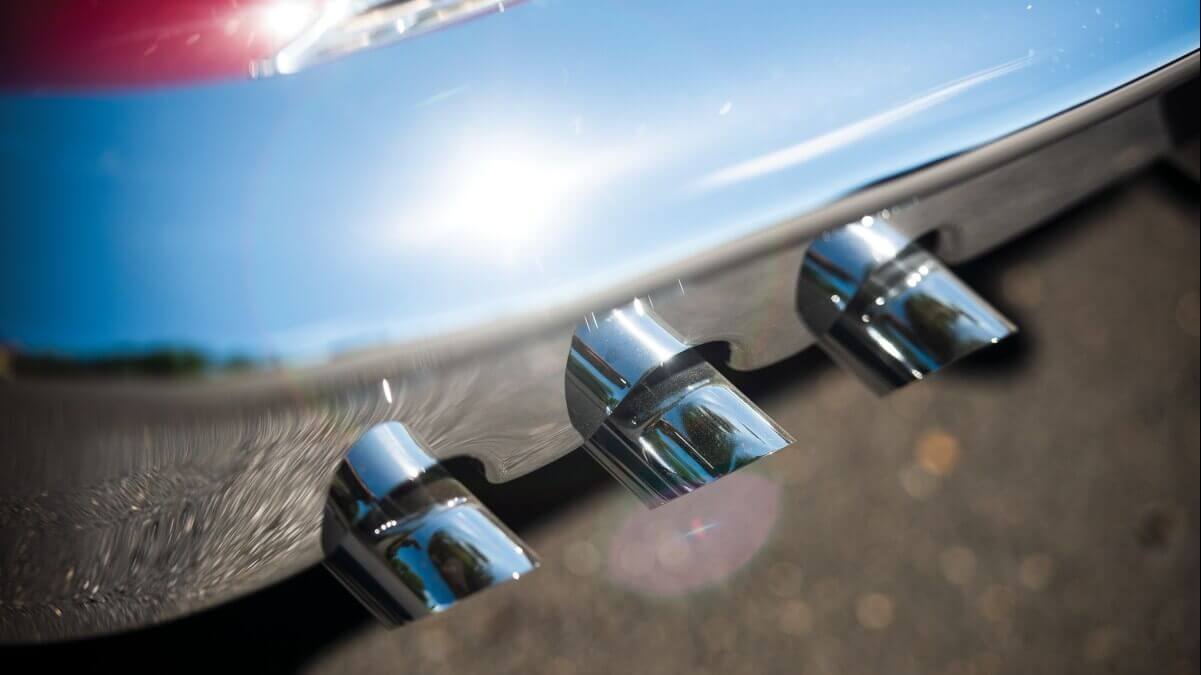



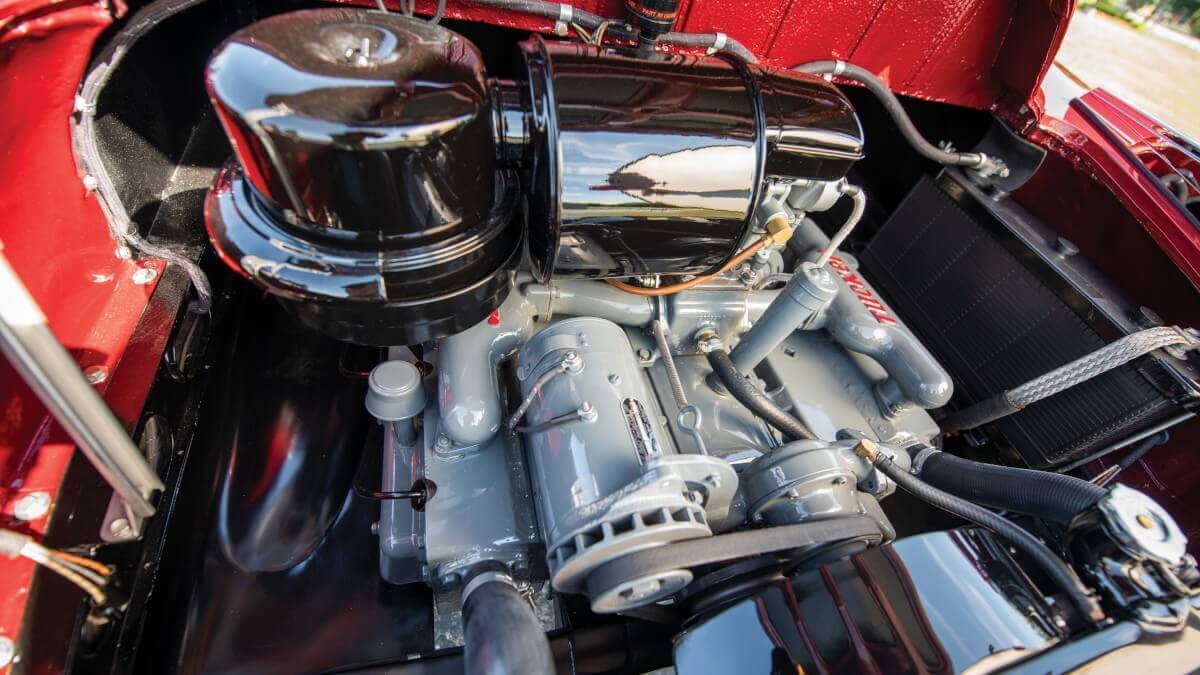



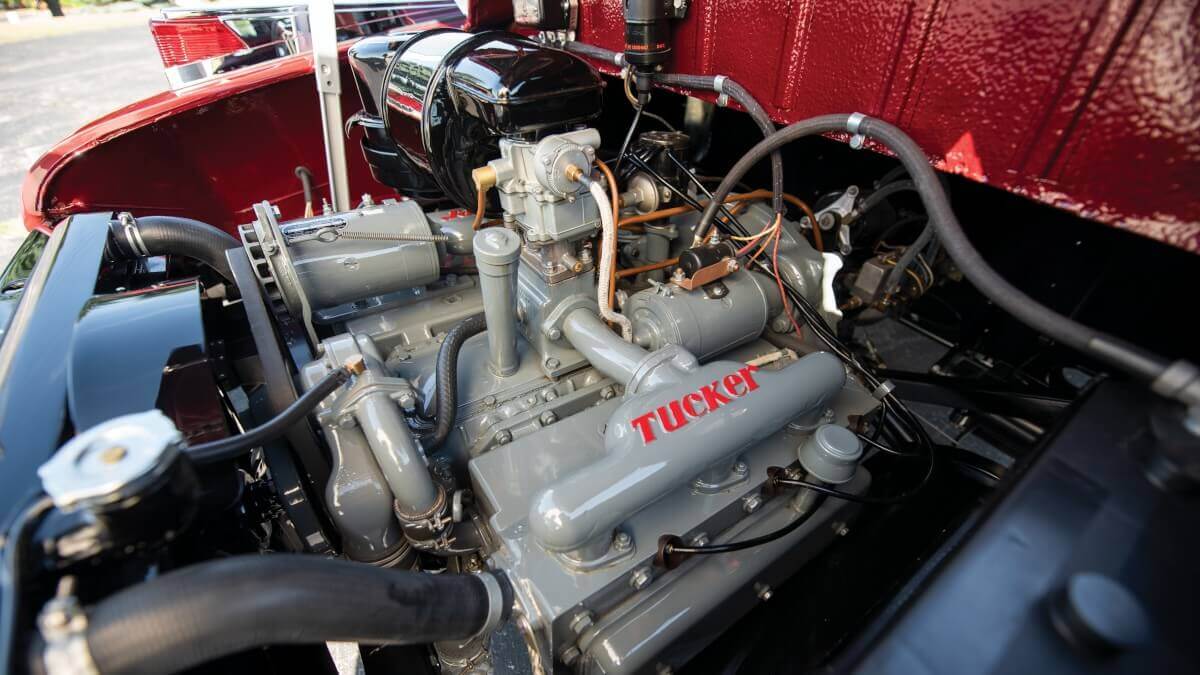



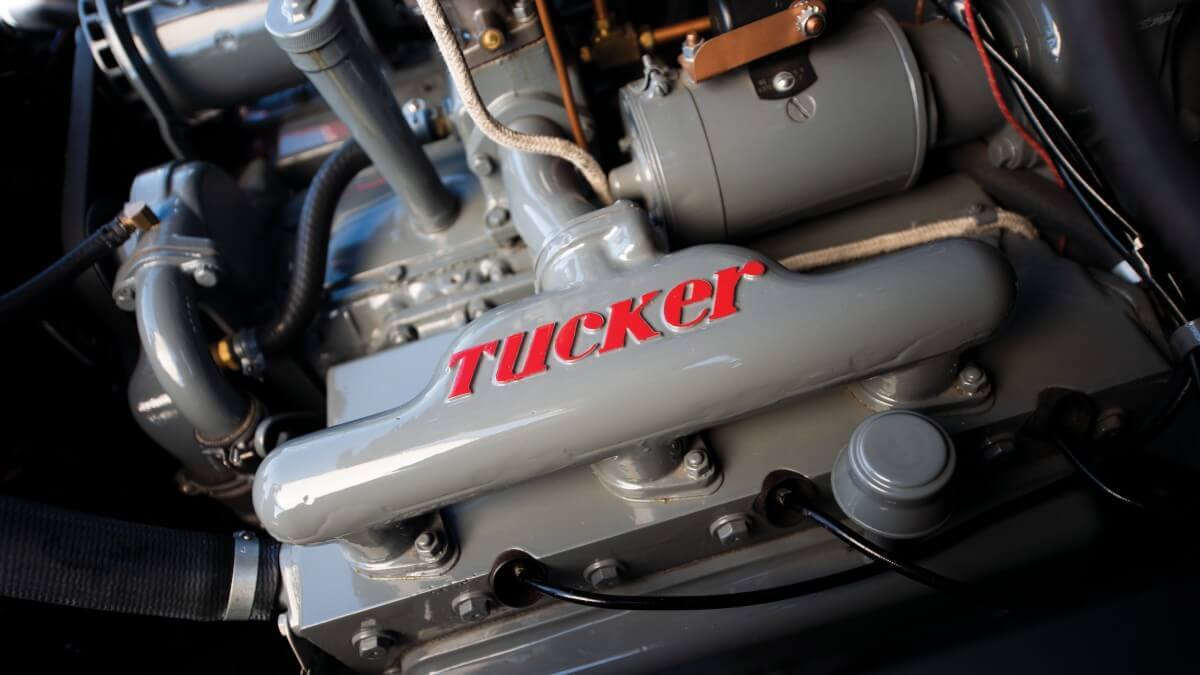



RM Sotheby’s is now offering the Tucker 48 with chassis number 1046 as part of their auction during Monterey Car Week. This vehicle is one of the last eight cars assembled by the remaining team when company founder Preston Tucker was tried in court. After the car was sold during the 1950 bankruptcy auction at the factory, it had a busy life. It was owned for about ten years by nightclub owner, racetrack owner and hotel owner Nick Jenin in Fort Lauderdale/Florida, who due to the unusual design and its effect to people owned up to nine Tucker 48 at the same time. He showed them in his traveling sideshow exhibit, ‘The Fabulous Tuckers’, up and down the East Coast well into the 1960s. Incomprehensibly, he mounted an Oldsmobile V8 engine under the front hood of 1046, to allow his daughter to drive a Tucker just as he did, but this did not work out as he had imagined. In front of her school she got so much attention because of the car, that in the evening she made it clear that she would rather walk there instead of continuing to use the car again. Subsequently, the conversed car served for some time as an everyday car for the Jenin family until Nick Jenin lost interest in the brand and offered his complete Tucker collection for sale in 1963.
Number 1046 he sold to Mr and Mrs Janecek in Springfield/Oregon. Here, the Tucker body moved to a Mercury chassis from 1964 and received a golden paint job. John Janecek was one of the founding members of the Tucker Automobile Club of America (TACA) and drove his car to various meetings in California, Kansas and Nevada, always on the road. Due to health problems, the couple sold the car in 2002 to Walter Ready in Prescott/Arizona, who exhibited it temporarily together with its direct sister vehicle 1047 in the Gilmore Car Museum. In 2007, the current owner acquired the Tucker and, together with the brand historians Martyn Donaldson and Mark Lieberman, made the decision to completely restore the vehicle to its delivery condition. For this purpose, they contacted the experts of RM Auto Restoration in Blenheim/Ontario, who had already restored several Tucker. Here, a new chassis was re-produced by digitally scanning the floors and support extensions of sister car 1047 and then having precise duplicates cut by water jet. Fuel tank, trunk floor and parts of the original Torsilastic suspension were fabricated as well. In addition, it was possible to source an original spare Tucker engine and a ‘new-old-stock’ dashboard for the newly upholstered interior. In order to make the painting in the color ‘Maroon’ as true to the original as possible, paint traces were scanned, which were found under the fender rubber welting and inside the glovebox door. The finished car is beautifully done and looks really as if it had just left the factory halls. RM Sotheby’s expects a hammer price between 1.8 and 2.1 million US$.
Images: RM Sotheby’s




